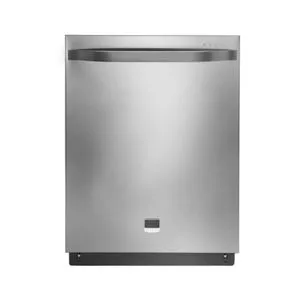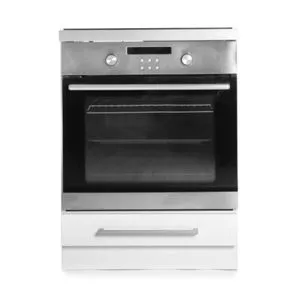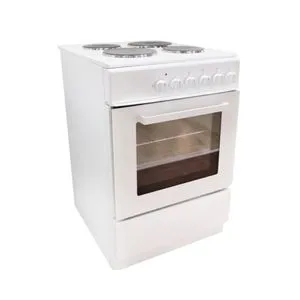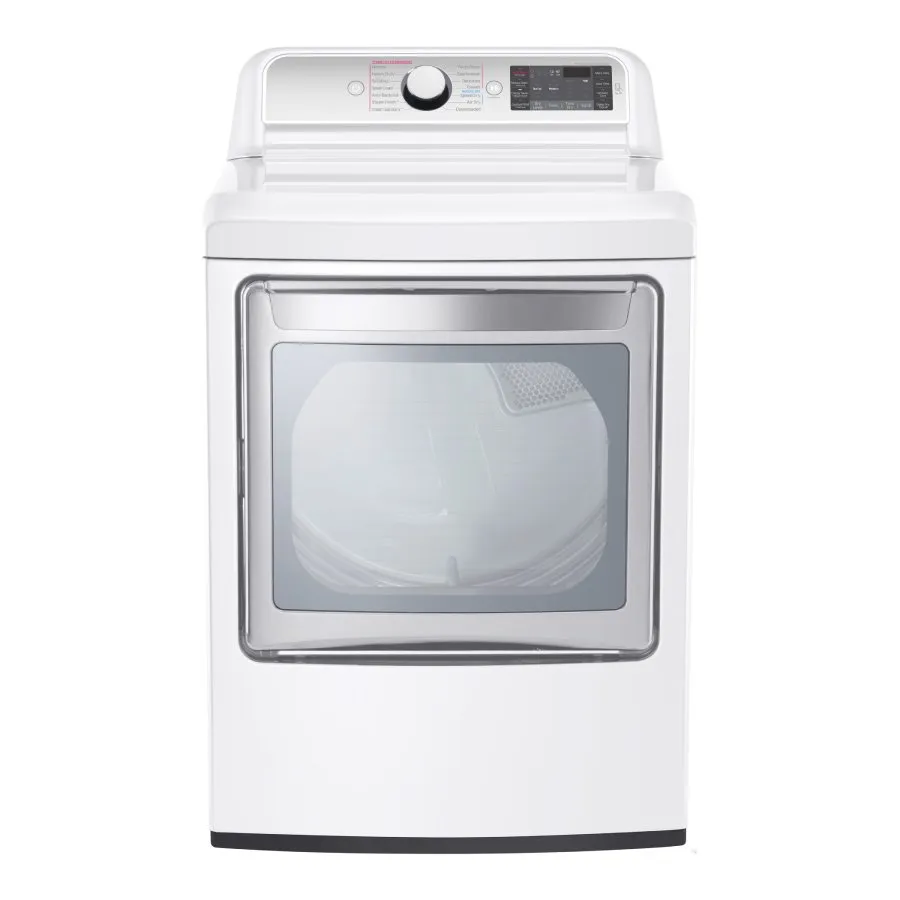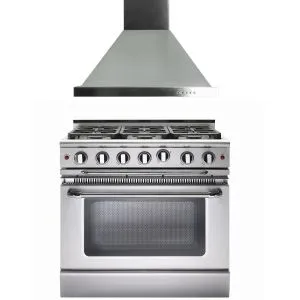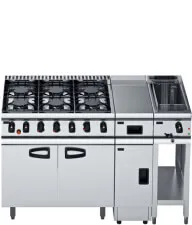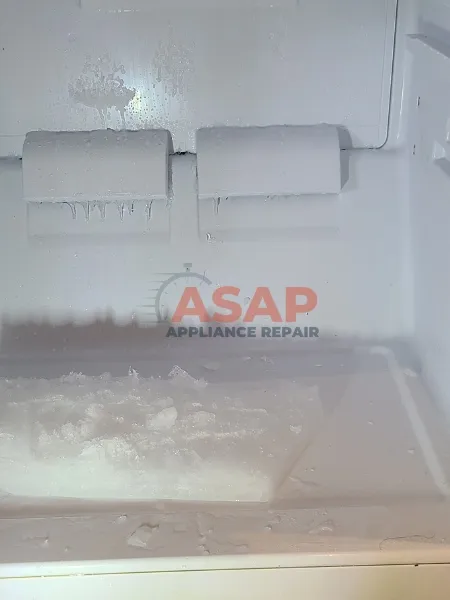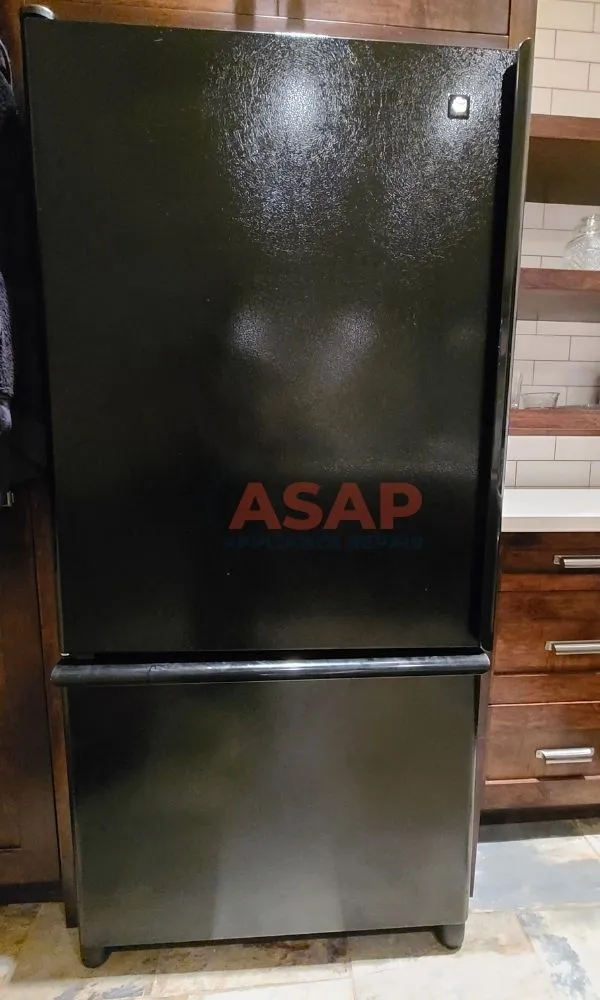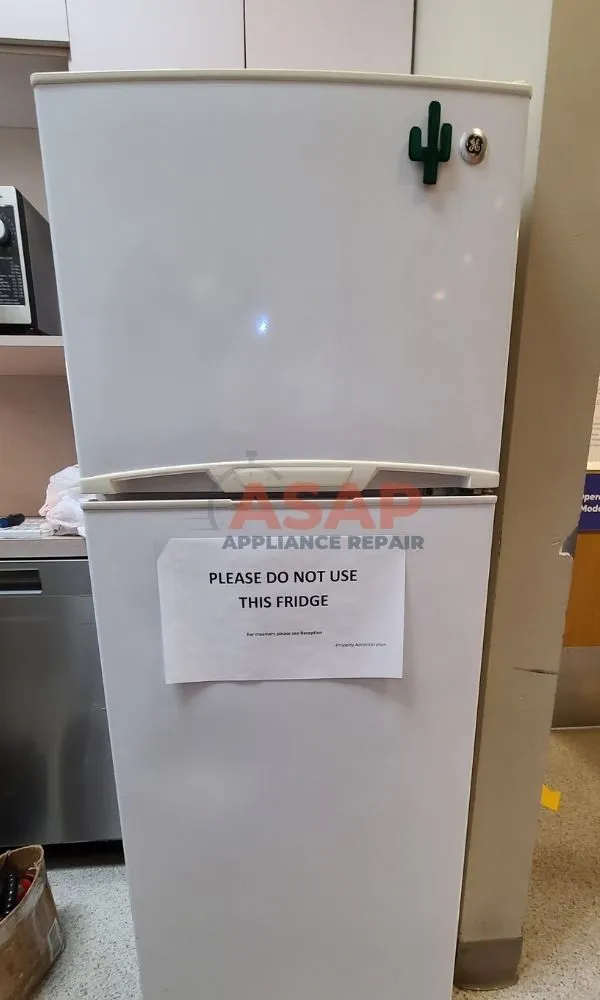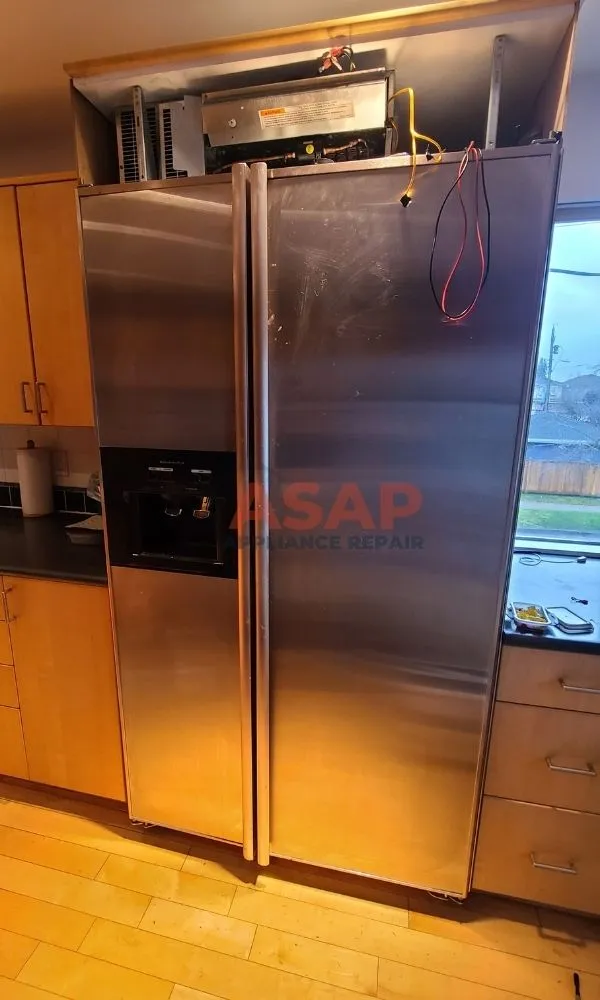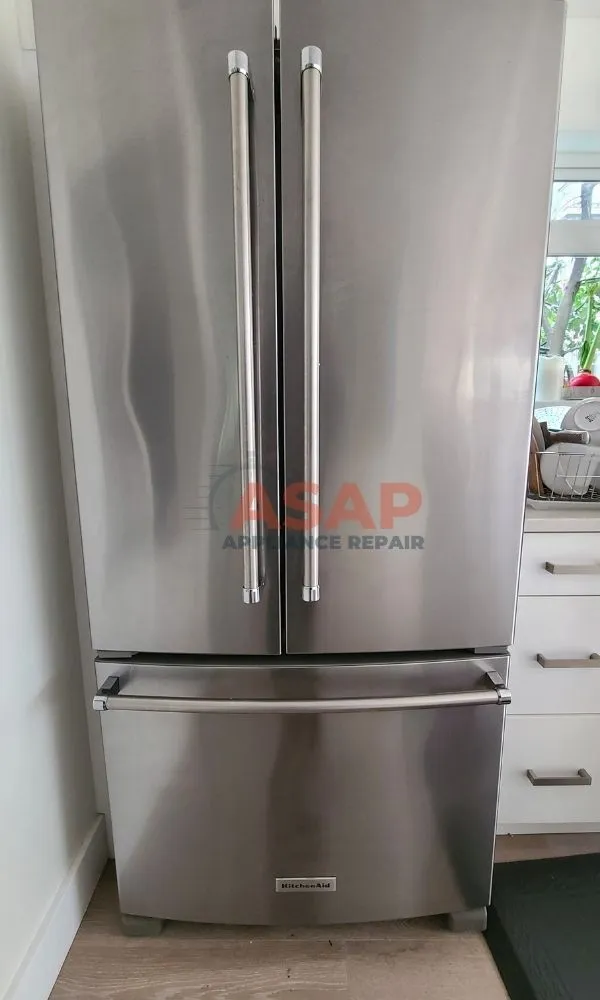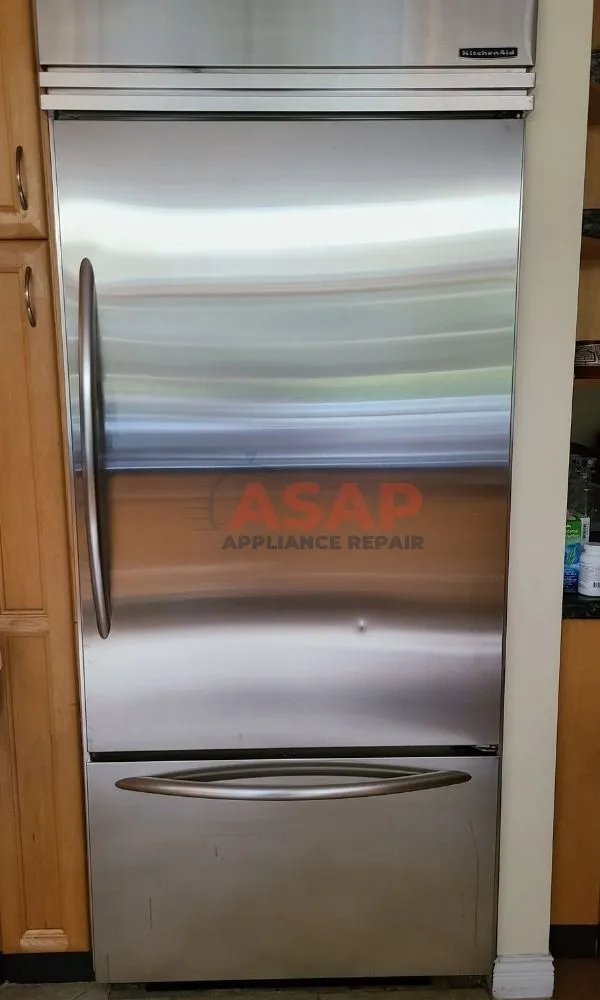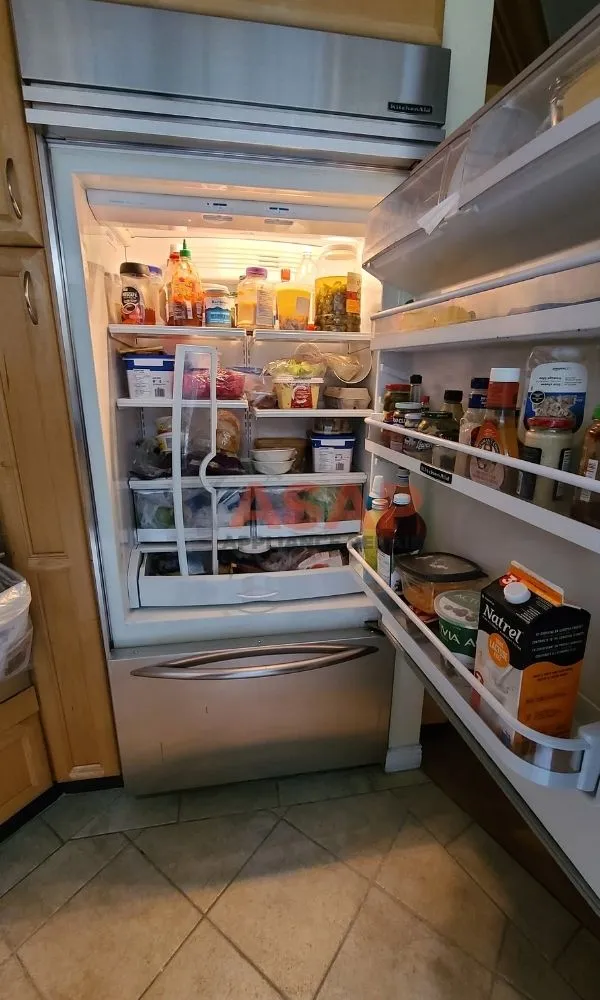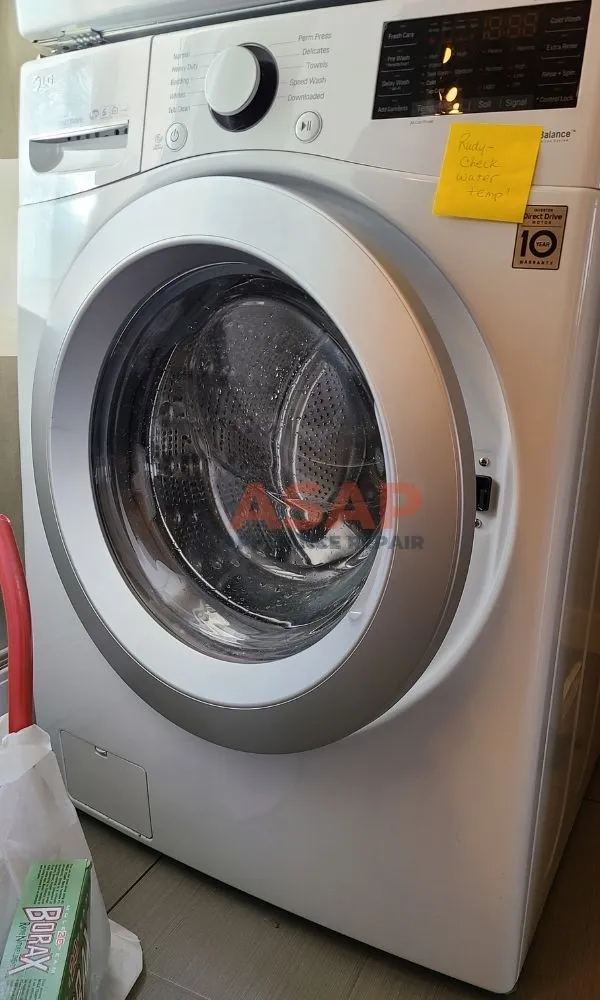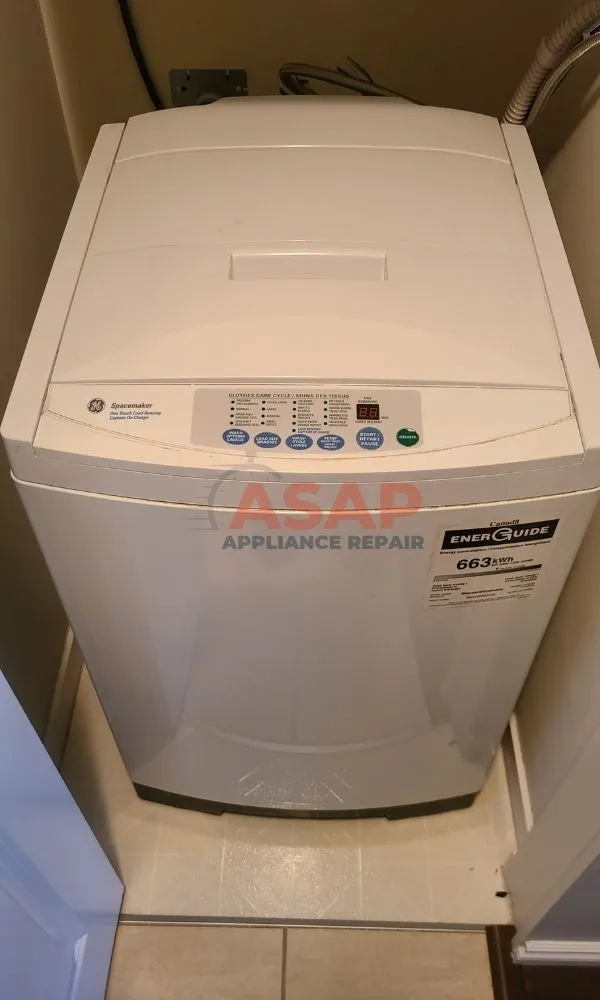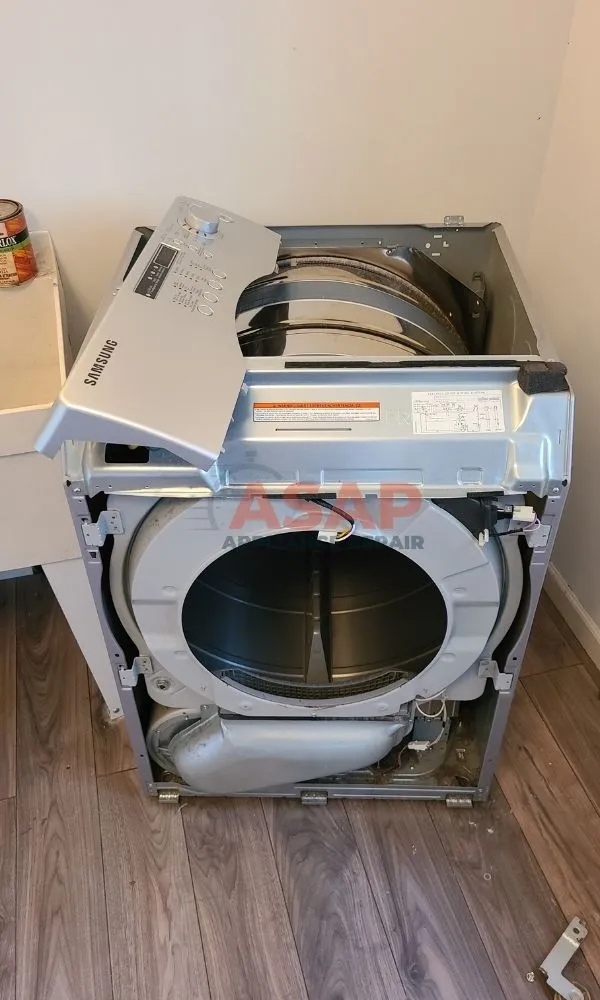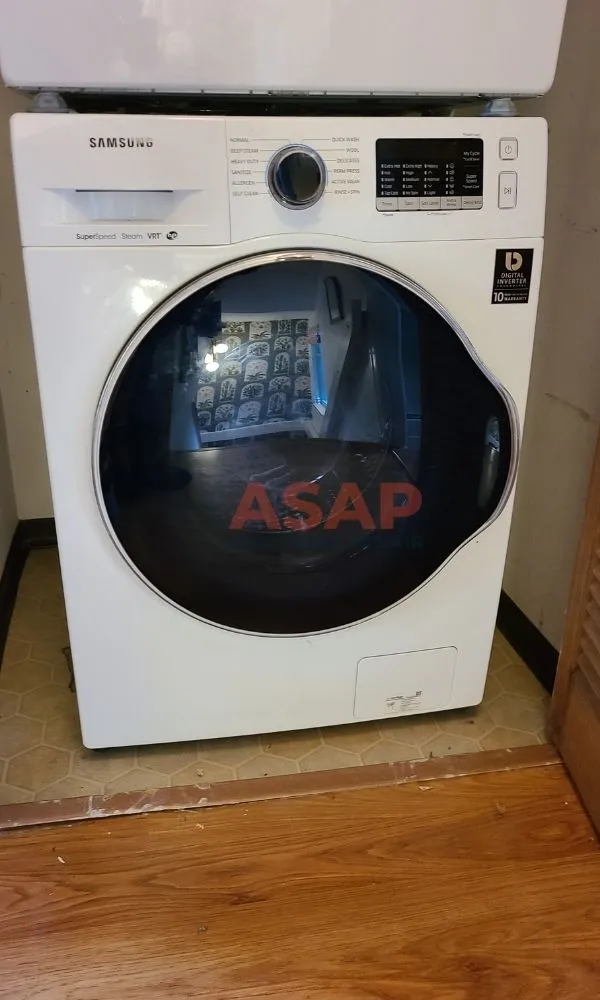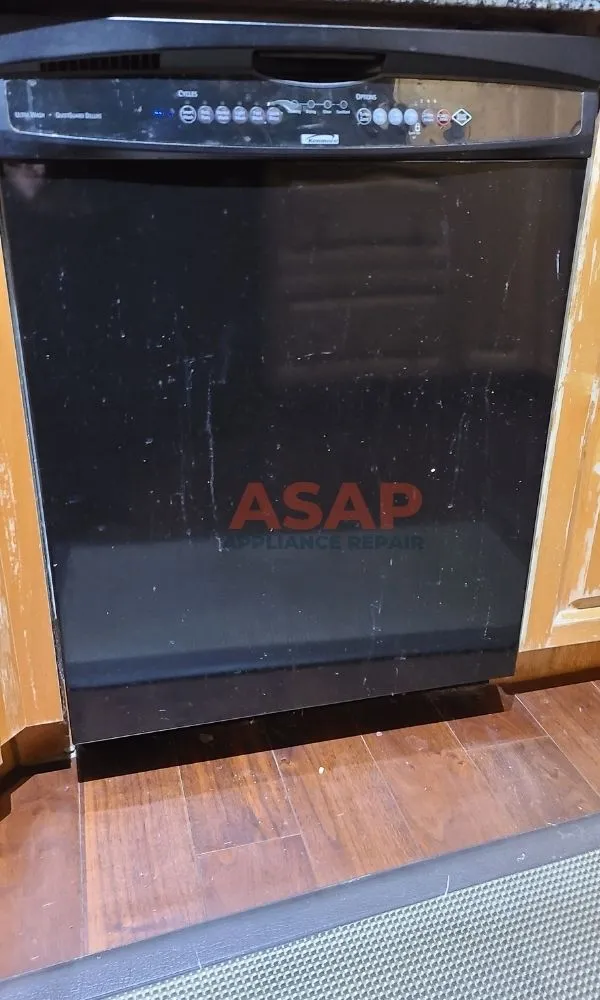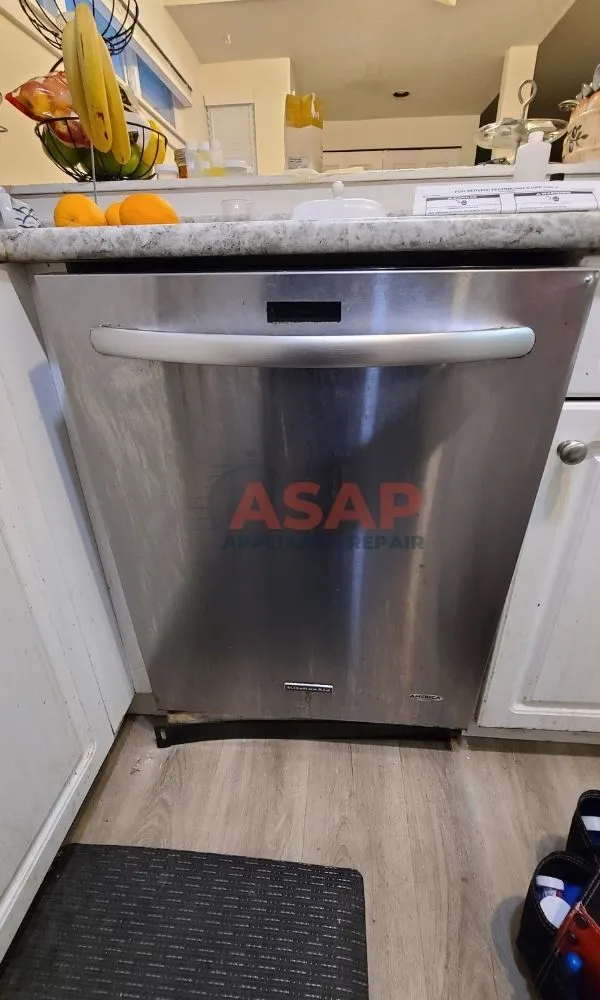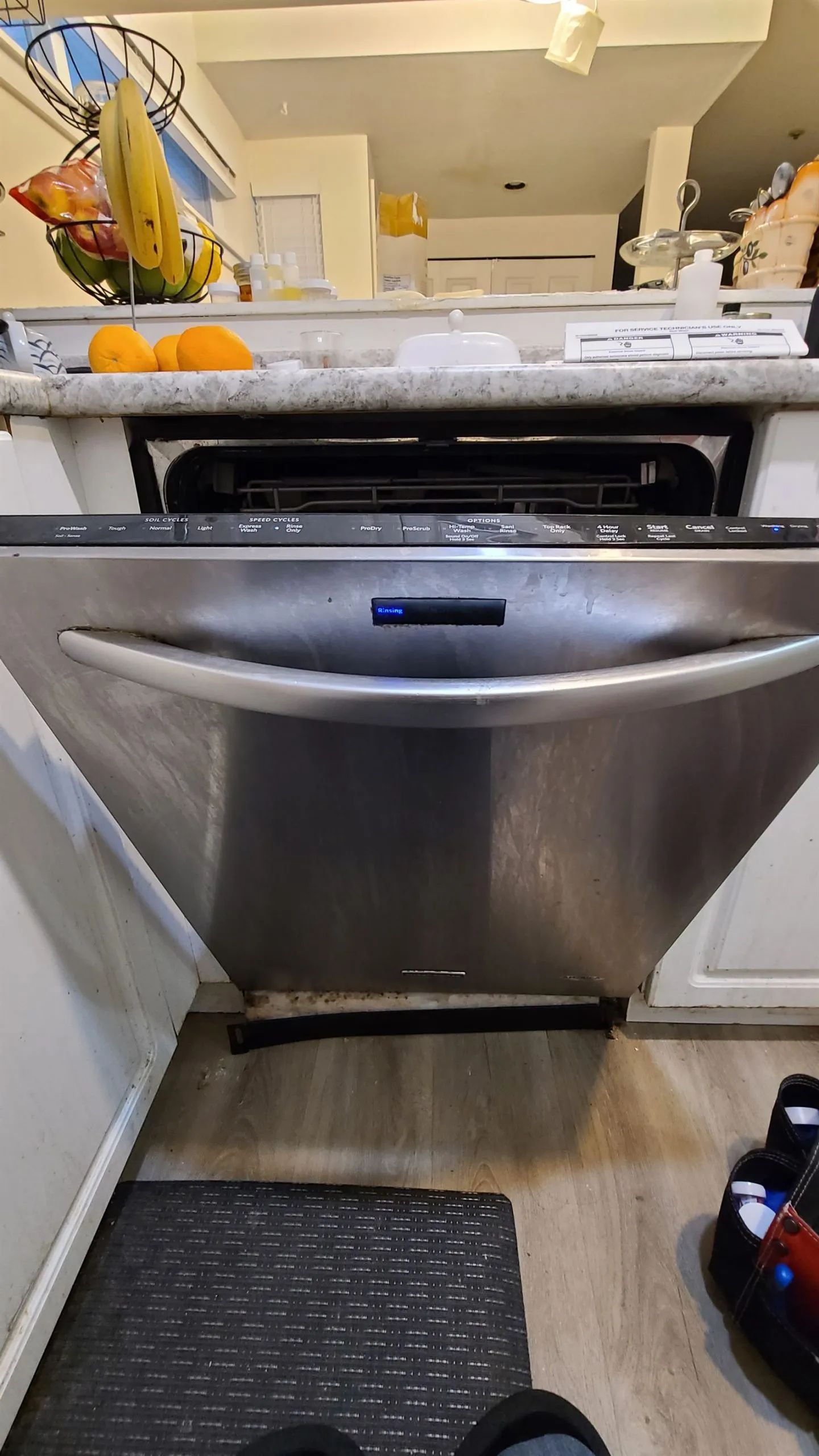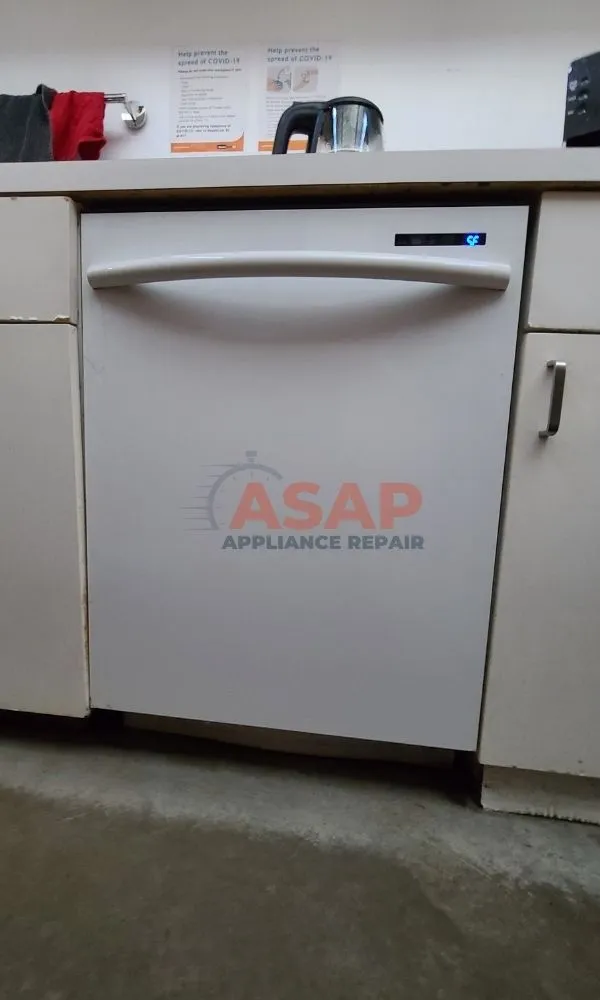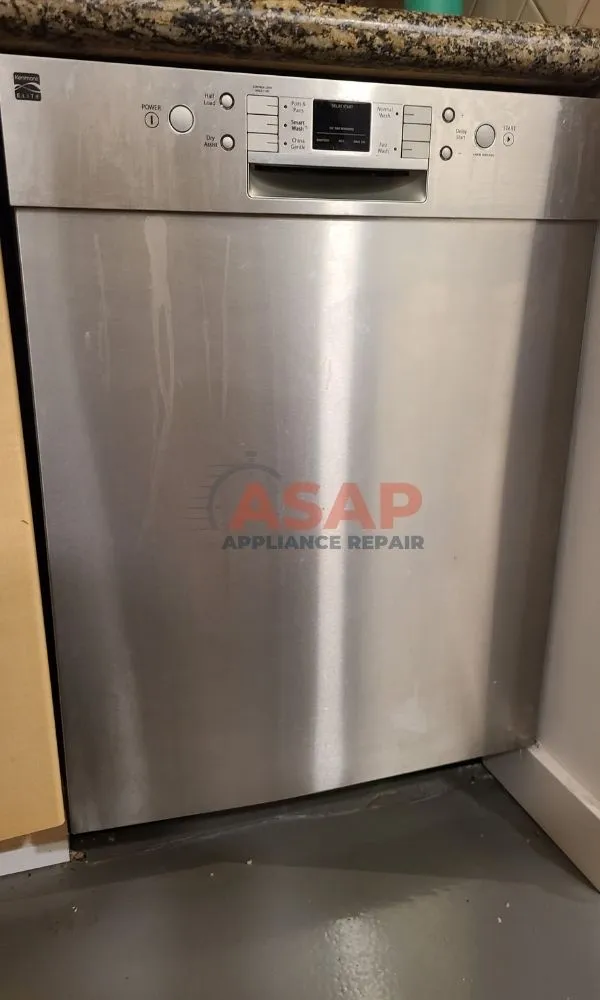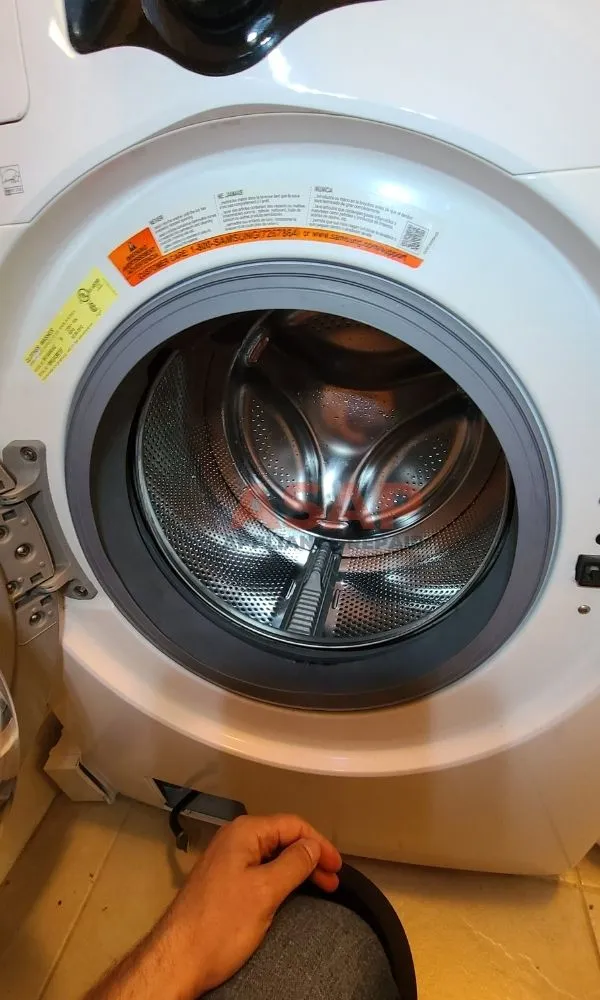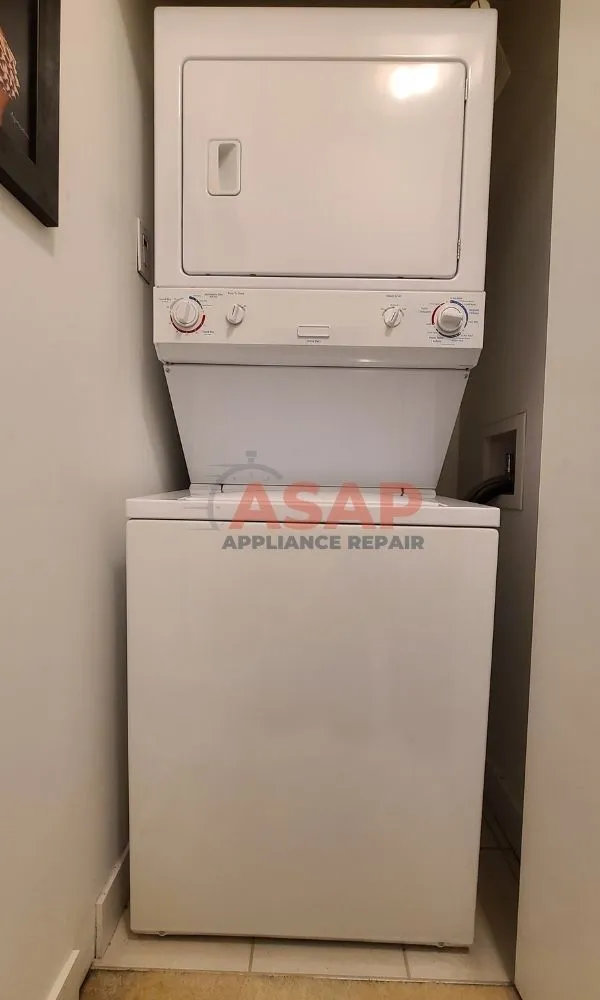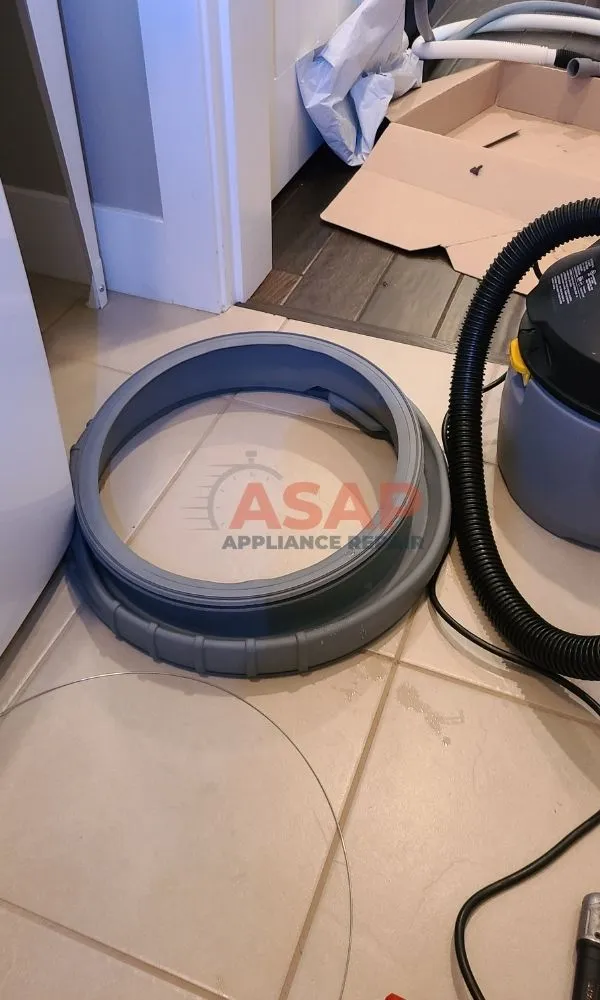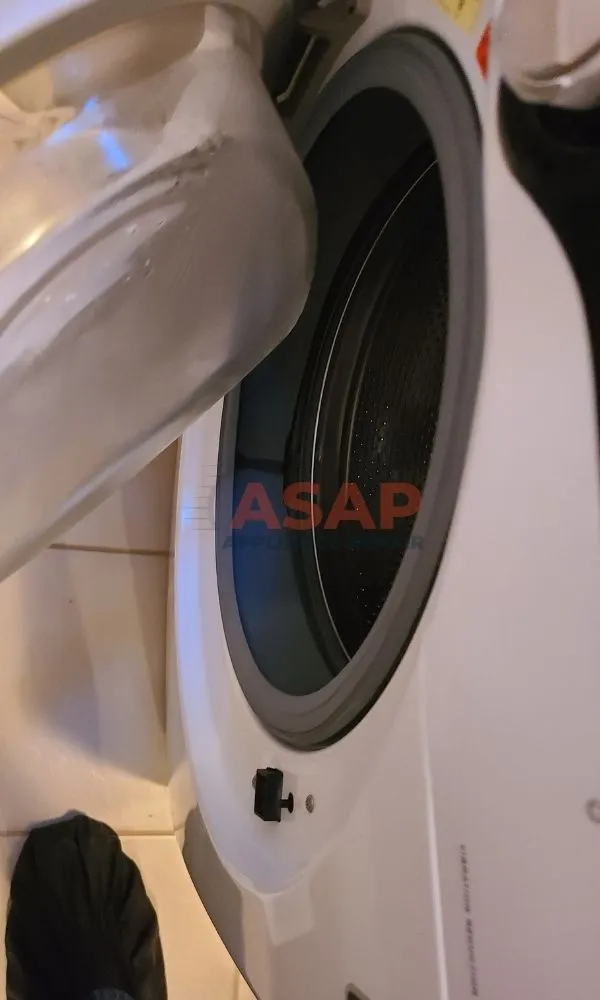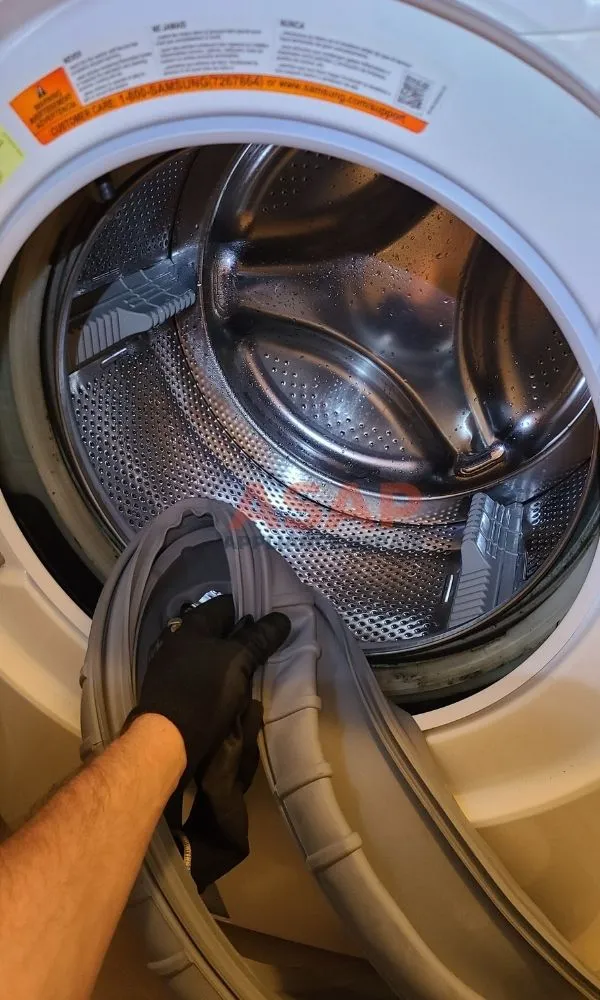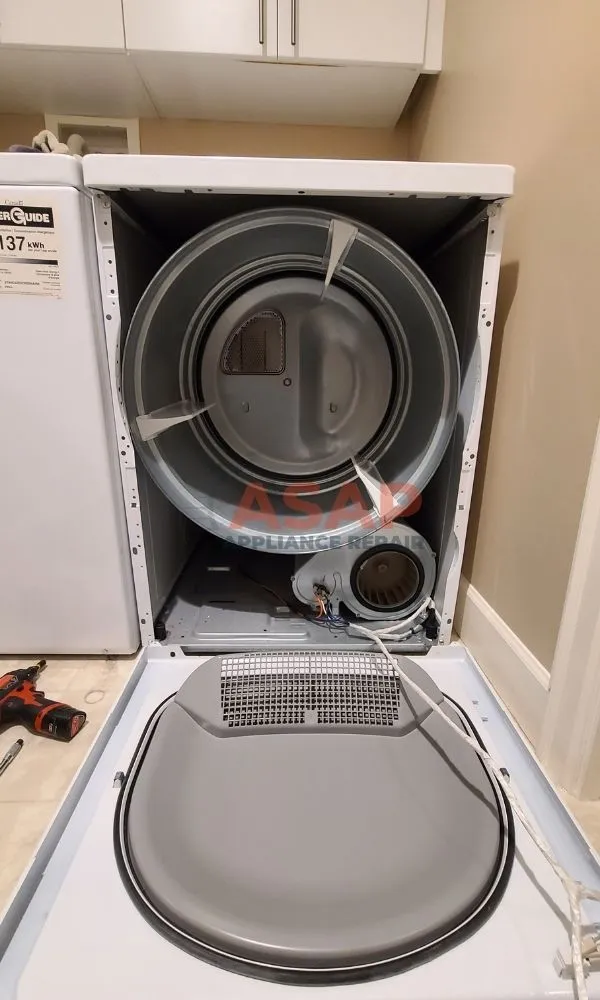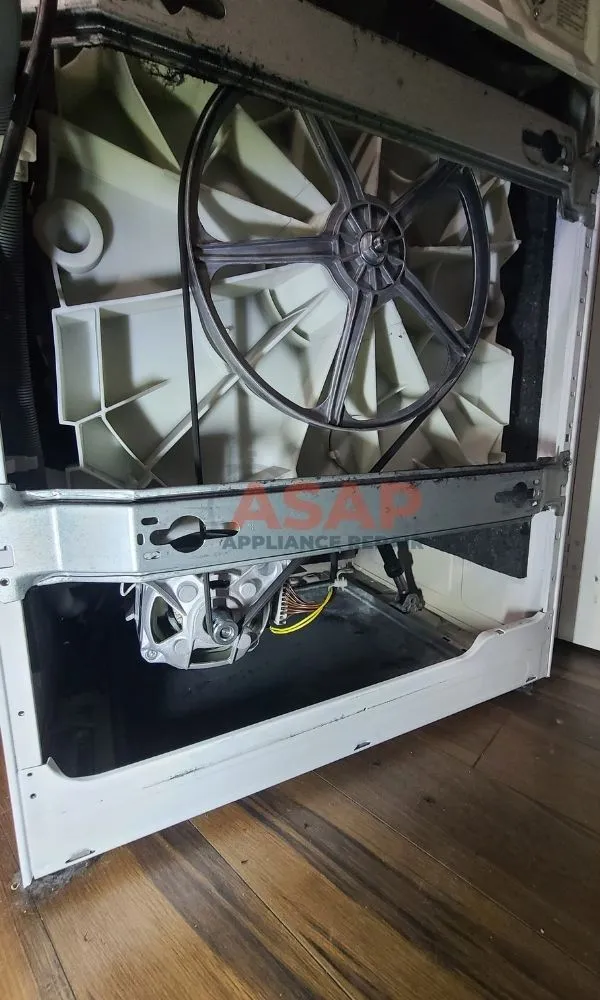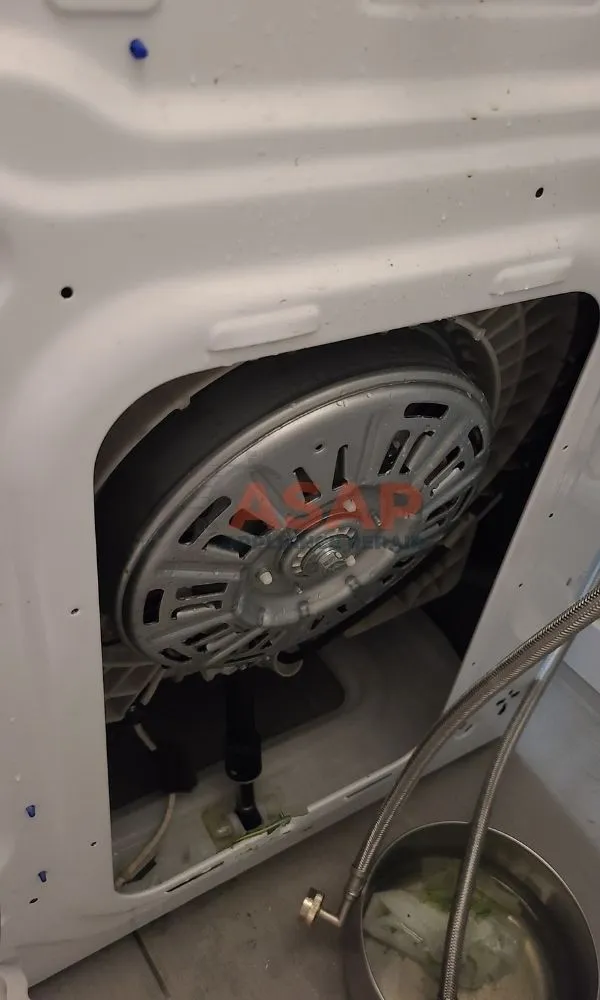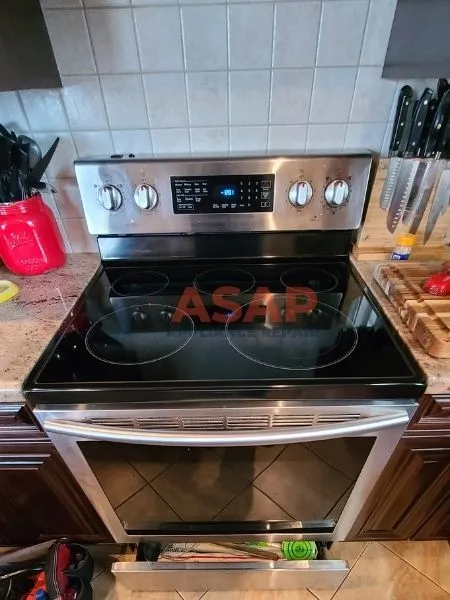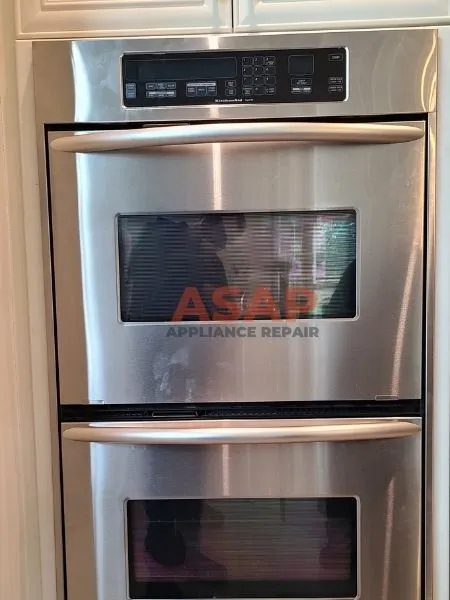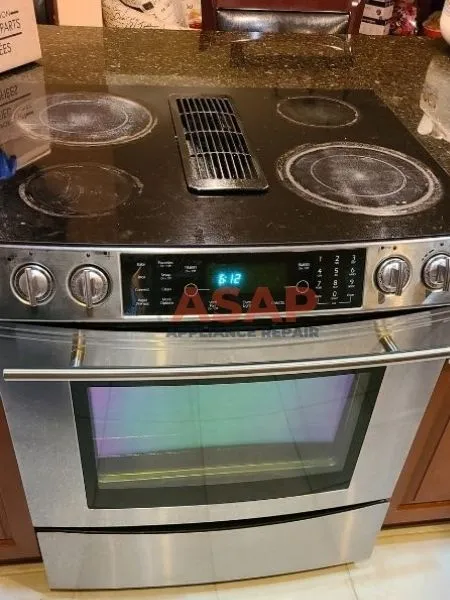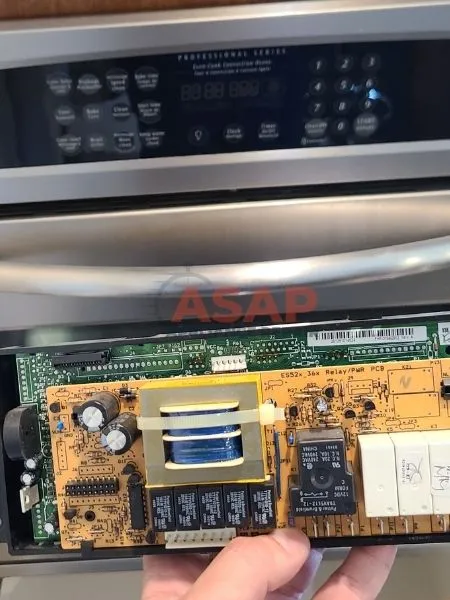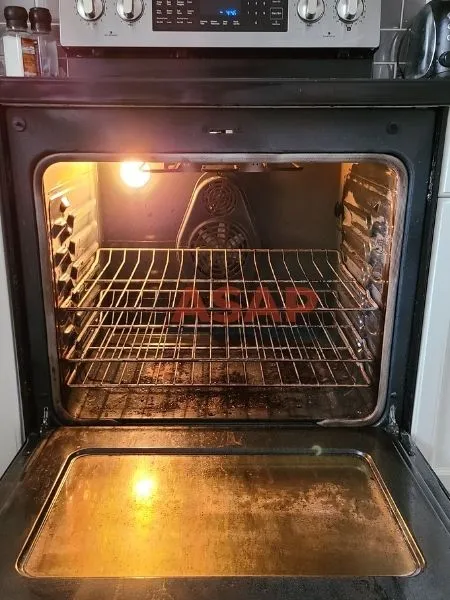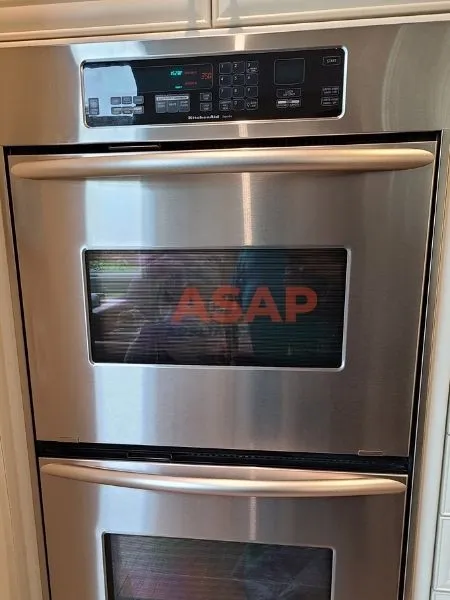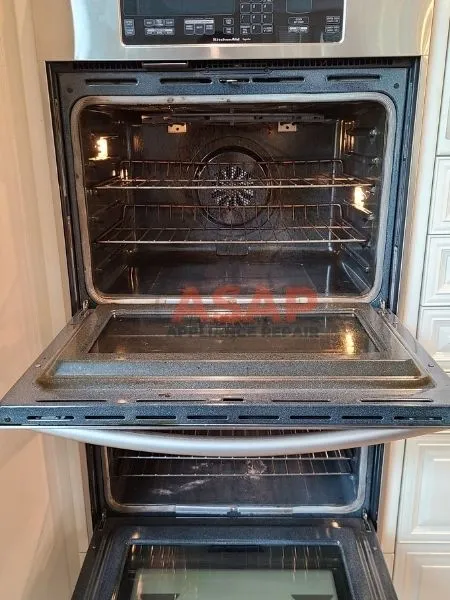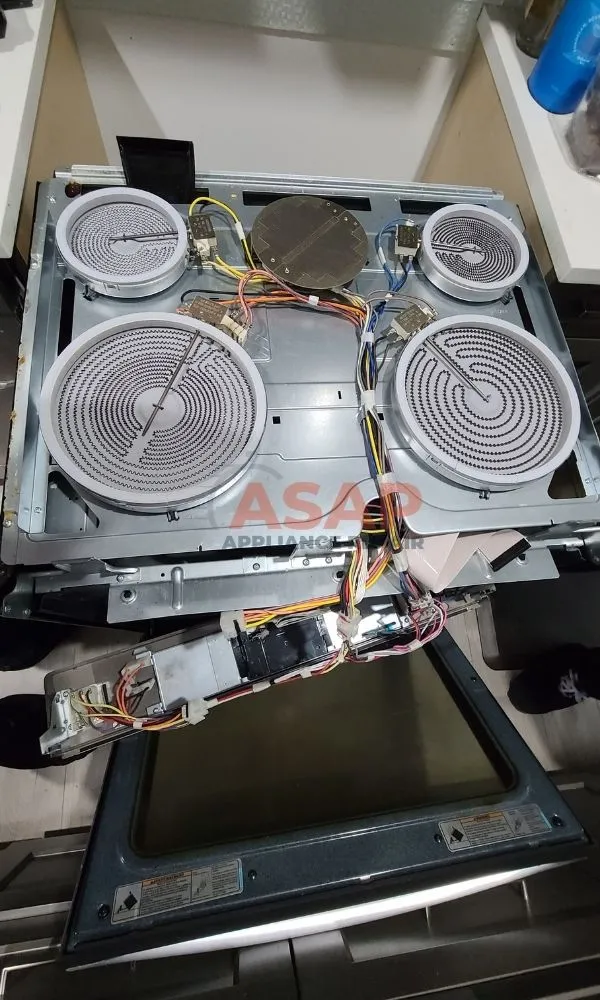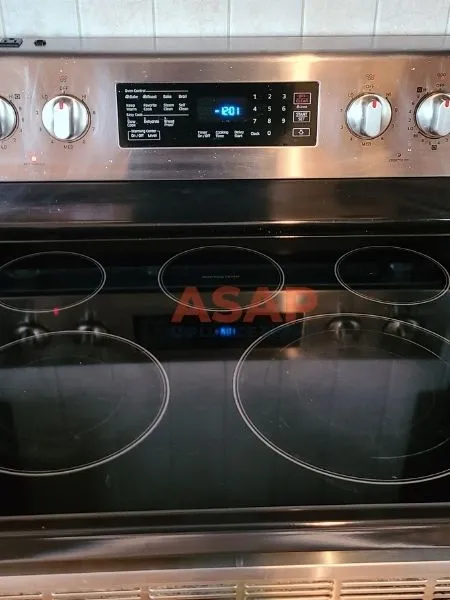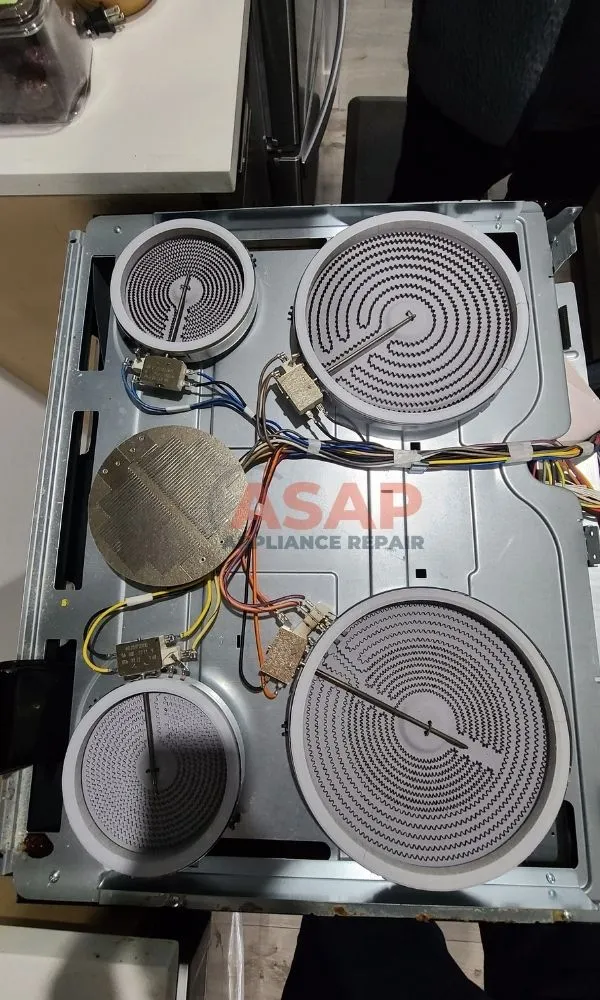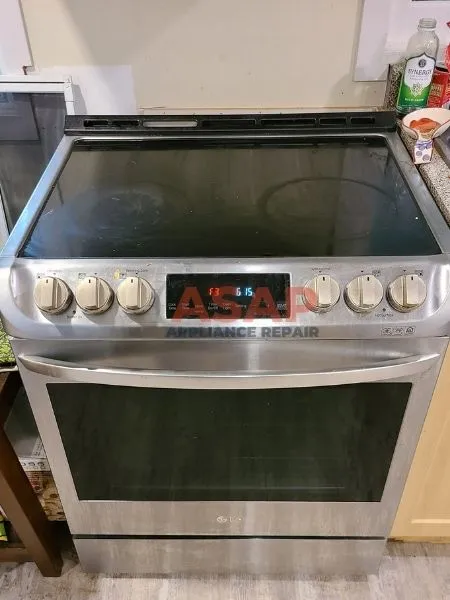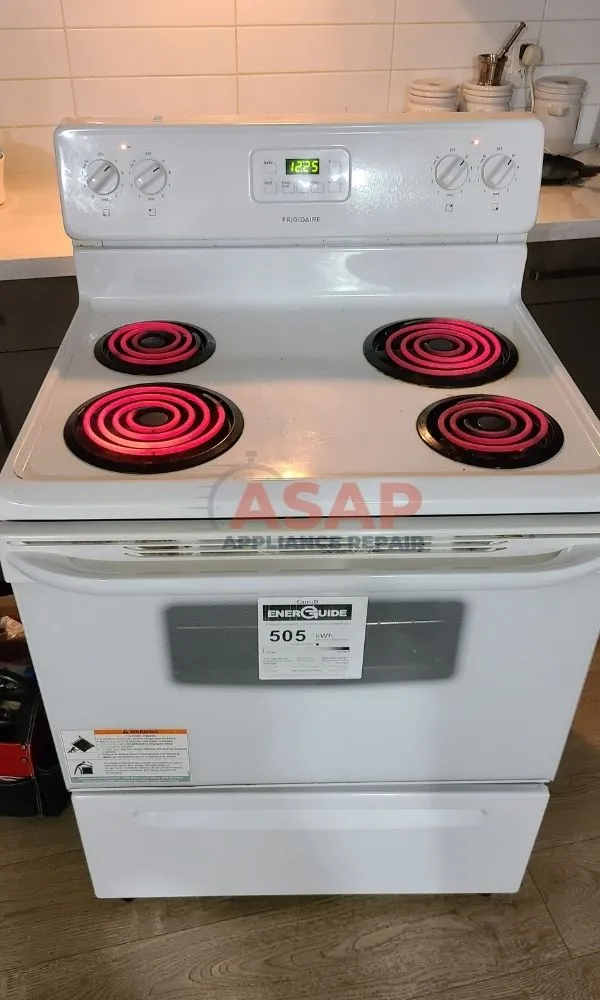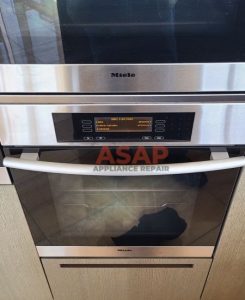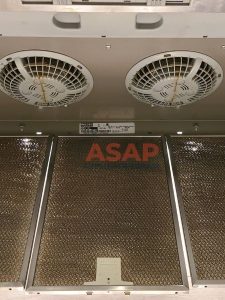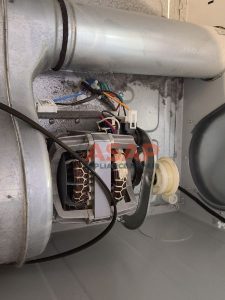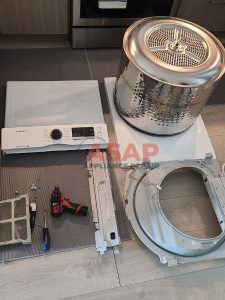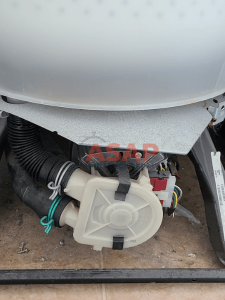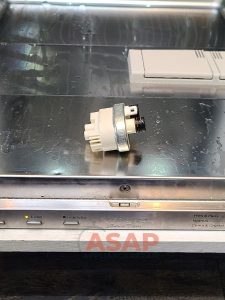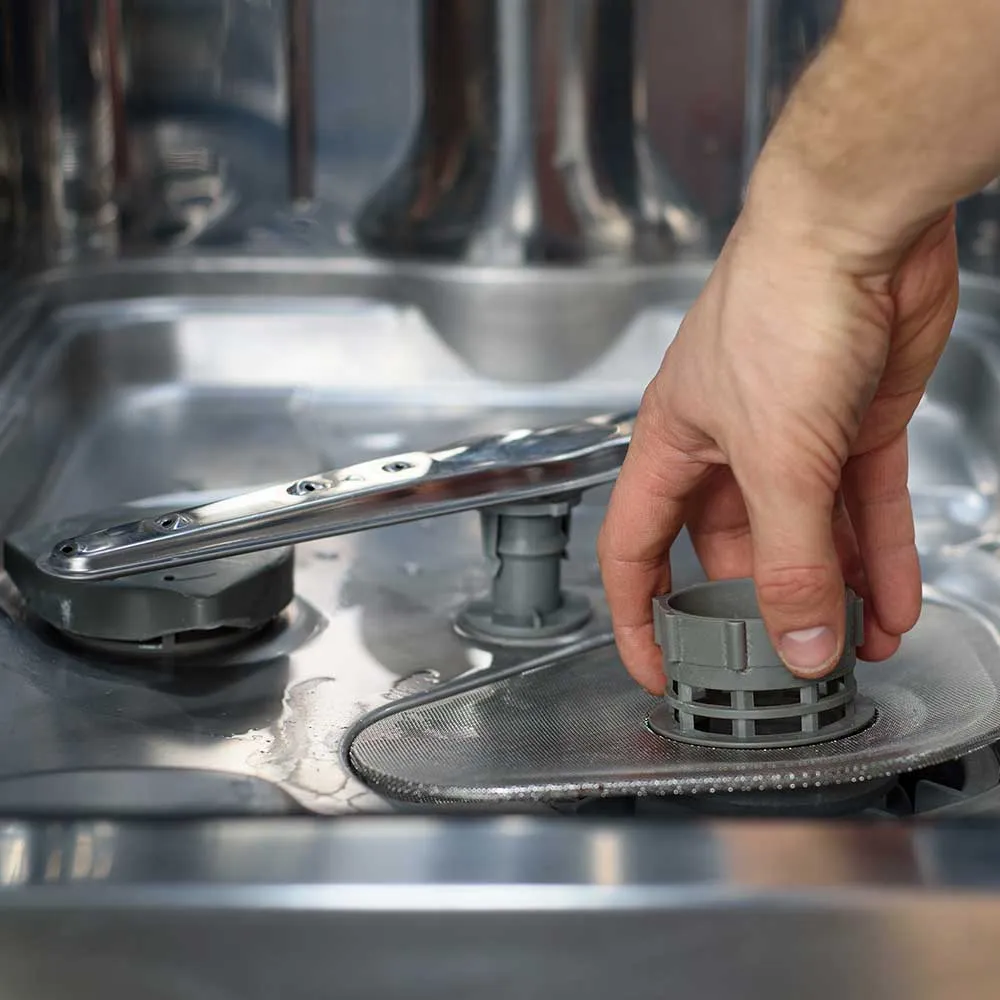Gas Appliance Certified
Trusted Appliance Repairs in Vancouver
Whatever the issue, we can fix it ASAP!
No waiting. No runaround. Just reliable appliance repair in Vancouver, available 7 days a week. Our experienced, background-checked technicians service all major brands – Samsung, LG, Whirlpool, GE, Bosch and more. Whether it’s a small issue or a major breakdown, we’ll get to you fast and fix it right the first time!
Prompt Repairs
Experienced & Friendly Technicians
All Across the Metro Vancouver
Call (604) 441-2521 Now!


Fixing Appliances Since 2009

Friendly and Experienced Techs

Fair & Transparent Pricing

Verified Reviews From Our Clients
We are proud to offer our customers quality service for the best prices!
The ASAP Appliance Repair Process
- Initial Estimate & Consultation – Call us for a free, no obligation estimate and consultation for your specific appliance. All you have to do is tell us the brand and the issue you are having. Our licensed Vancouver appliance technicians have a vast amount of experience repairing all kinds of appliances, so they can quickly find the issue and give you a timeline and repair estimate.
- Prompt Dispatching & Repair – We show up at your home ASAP (prompt in most cases). Once the appliance issue has been identified and diagnosed, our experts get to work repairing or swapping the faulty part of the appliance.
- Testing & Clean Up – Our team treats every home like it is their own and always leaves the jobsite cleaner than before we arrived. Last but certainly not the least, our specialists extensively test the repaired appliance to make sure it is running at optimal efficiency. Our technicians only leave a jobsite once the customer is completely satisfied and the appliance is up and running again!
Fixing appliances, one home at a time. Reliable appliance repairs Vancouver residents count on!
Available 7 days a week
(604) 441-2521
Type of Appliance Repairs We Provide
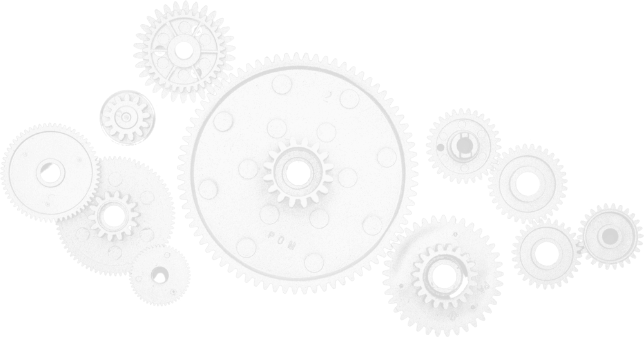

Fridge Repair Vancouver
When your fridge stops cooling or starts leaking, it throws everything off. At ASAP Appliance Repair, we work on fridges every single day – from minor thermostat issues to full cooling system repairs. Our technicians have fixed just about every brand and model out there, so we know how to get yours running again fast.
We offer prompt fridge repair in Vancouver in most cases or next day at the latest using genuine parts and proven methods to keep your food fresh and your mind at ease.
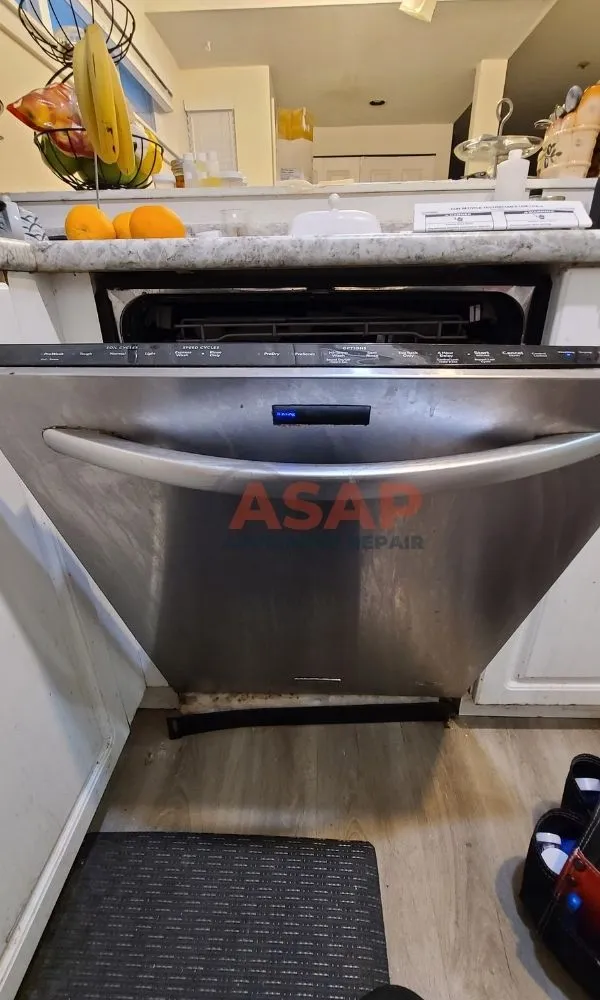
Dishwasher Repair in Vancouver
A broken dishwasher is one of those things you don’t realize you depend on until it’s gone. Whether it’s not draining, not cleaning, or making odd noises, our team at ASAP Appliance Repair has seen it all. We service dishwashers from all major brands daily and know exactly what to check first.
If you need quick and reliable dishwasher repair in Vancouver, we’ll diagnose the issue and get it fixed right so you can get back to clean dishes without the handwashing marathon.


Washer Repair in Vancouver
Your washer takes a beating, load after load so when it breaks, you need someone who truly understands these machines. Our team handles washer problems every day, from leaks and loud spins to electrical issues. With years of hands-on experience across all major brands, we can pinpoint problems quickly and fix them properly.
Need fast washer repair in Vancouver? We offer prompt or next-day service and always stand behind our work.
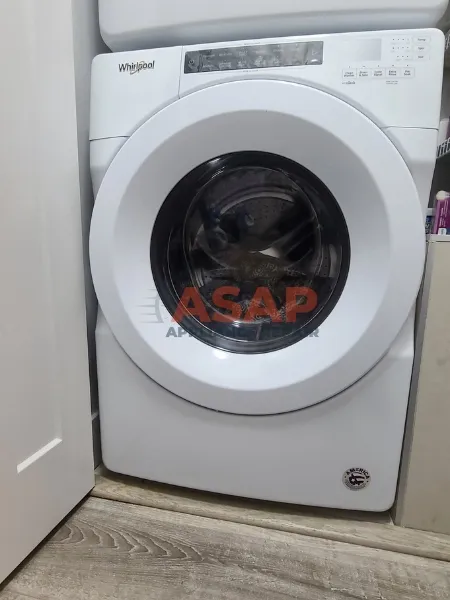
Dryer Repair in Vancouver
If your clothes are taking forever to dry, overheating, or coming out cold, your dryer needs attention. At ASAP Appliance Repair, we fix dryers from all major brands. We handle heating element replacements, belt repairs, vent cleaning, and more, every single day.
Call us for professional dryer repair in Vancouver and finally wash away the pile of dirty laundry!


Oven Repair in Vancouver
Cooking plans ruined because your oven won’t heat evenly or won’t turn on at all? We can help. Our technicians have years of experience repairing all all major brands and models- from wall ovens to built-in units. We deal with faulty elements, control boards and temperature issues daily and know how to fix them right the first time.
Book your oven repair in Vancouver today and get your kitchen back in action before your next meal.
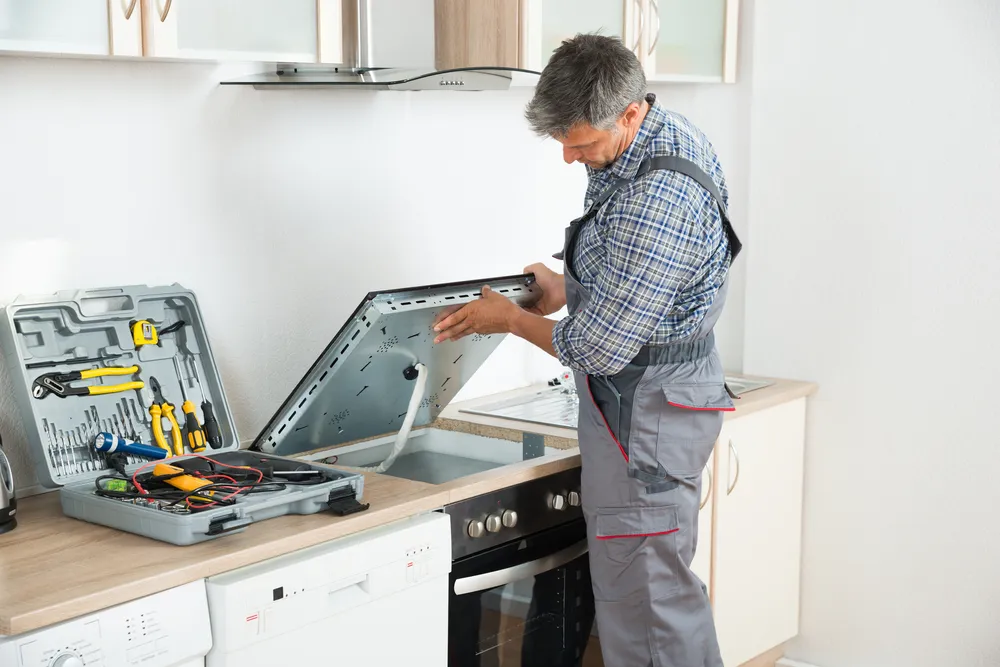
Stove Repairs Vancouver
If your stove isn’t heating properly or a burner stops working, it can really get in the way of cooking. At ASAP Appliance Repair, we handle all types of stoves and cooktops from modern glass-tops to older coil models. Our technicians have seen just about every issue and know how to fix it safely and efficiently.
For quick, reliable stove repair in Vancouver, trust the team that fixes these problems day in and day out.
Common Household Appliance Issues We Fix On a Daily Basis
Let’s face it – appliances aren’t built to last forever and sooner or later, they’ll act up. Some problems are minor and can be fixed quickly. Others might seem small at first but turn out to be signs of something bigger going on behind the scenes. Different brands also tend to have their own quirks. For example, some front-load washers are more prone to drainage problems, while certain refrigerator models may be known for ice maker issues.
Here are some of the most common issues we see and fix on a daily basis:
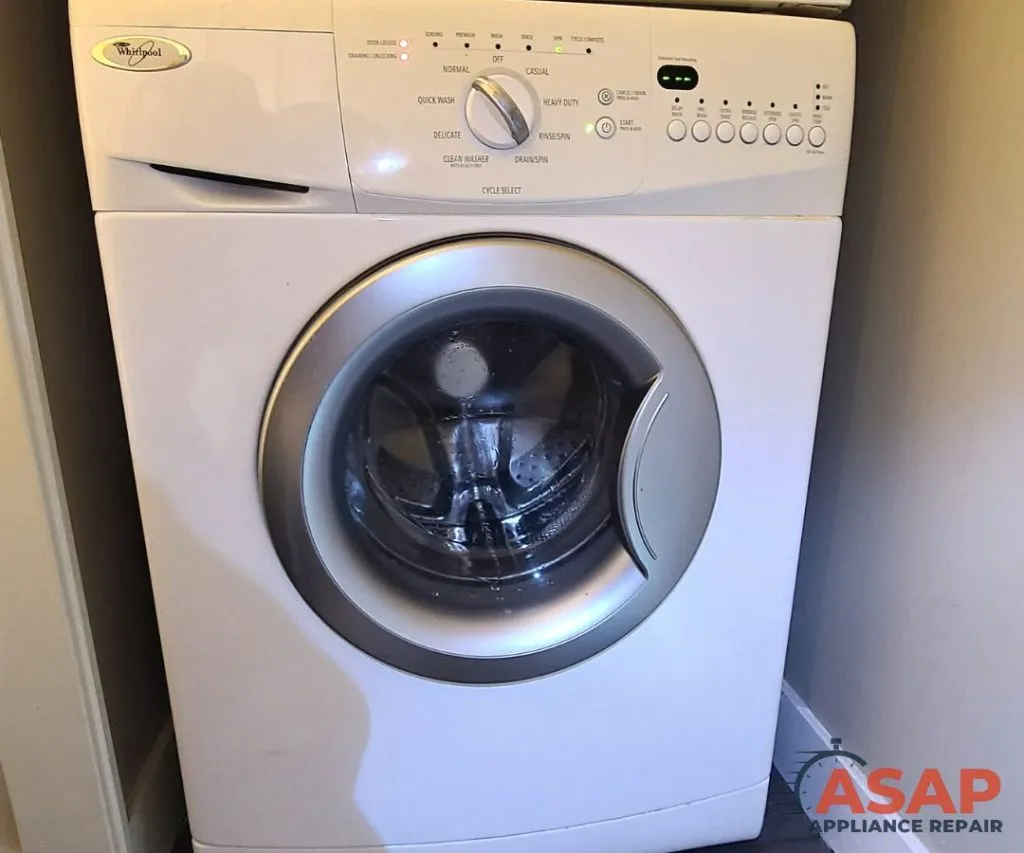
If your washing machine is leaking, the first thing you should do is identify where it is coming from. Check both inside and outside of the machine to find any visible signs of leakage. If you cannot see any obvious source of leakage, then you may need to call a repairman for assistance.
Common causes of leaks include worn-out door seals, hose connections that are loose or cracked, or clogged drains. If these are the cause of the issue, they can usually be fixed with replacement parts and some basic tools. However, more serious issues such as a damaged pump or motor, then an expert repair technician should be called.
It is likely that the cause of your washing machine not draining has something to do with the drain hose or pump. The first thing you should do is make sure that the drain hose is properly connected and there are no kinks. If it looks okay, then next check the filter in the drain pump for any debris or blockages. If you find anything blocking it, remove it carefully and see if that resolves the problem. If not, then the issue may be more serious and require a professional repair service. Before calling our repair service, try resetting your washing machine by unplugging it and plugging it back in after a few minutes. This could potentially resolve any software or hardware issues causing the draining issue.
If the above steps still haven’t fixed the problem, it may be time to contact a professional. Our qualified technicians will be able to diagnose and fix the problem quickly and safely.
Some of us may be troubled with unpleasant odors coming from the washing machine. Maintaining your washer inside and out can be important to keep it running effectively and smelling fresh. If you find that you only use cold washes, consider turning up the water temperature and running a cycle to help combat the development of bacteria and grime that cause bad smells. If this doesn’t do the trick, experts suggest taking a run with a safe mixture of white vinegar and baking soda. Here is the mixture you can use:
- ¼ cup of baking soda
- ¼ cup of water
- 2 cups of white vinegar
Start by pouring the baking soda and water in the detergent drawer, and the white vinegar into the machine’s drum. Then run a cycle on a high heat setting for best results. If the smell still lingers, take a look at your washer’s filter. It may be full of dirt and grime. Give it a good cleaning to get rid of anything that may have been trapped inside, which will help return the freshness back to your machine!
If your washing machine sounds like a jet engine during the spin cycle, something’s off. A common cause is an unbalanced load – try rearranging the clothes and running a shorter spin. But if the noise is more like banging, grinding, or screeching, it could mean worn-out drum bearings, a loose drum, or a failing motor. These parts wear over time, especially in older machines. A technician can inspect and replace these components if needed.
First, double-check the power source. Is it plugged in properly? Is the breaker tripped? If that’s all good, it could be a faulty door latch, a blown fuse, or an issue with the control board. Modern washers are sensitive to safety settings, if the lid doesn’t lock properly, the machine won’t start. If you’re unsure, don’t force it have a professional take a look.
If your washer is filling slowly or not at all it might be due to low water pressure, a kinked inlet hose, or clogged filters at the water inlet valve. Sediment buildup is common over time and can block water flow. Try cleaning out the screens on the hoses, but if that doesn’t help, it may need a valve replacement.
If your clothes come out sopping wet, the washer might not be completing its spin cycle properly. This could be due to an unbalanced load, a worn drive belt, or issues with the lid switch (which stops the spin if the lid isn’t properly closed). In front-load washers, it might also point to a drain pump problem. If it’s happening frequently, it’s worth getting checked before it leads to bigger problems.
If your dryer is having difficulty heating up, it could be a sign of a few potential issues. The first thing you should do is check the power source and make sure it’s plugged securely into an outlet. If the plug appears to be secure but the dryer still isn’t heating properly, there are a few common culprits to look out for.
One cause may be insufficient airflow in the dryer drum or vent system. Lint buildup can restrict air flow, so it’s important to regularly clean out your lint filter as well as any ducting behind the machine. Also check for any obstructions inside the dryer drum that could impede air movement. It’s also possible for the heating element to fail, especially if your dryer is older. Other potential problems include clogged exhaust ducts, faulty thermostats or thermal fuses, and worn-out drive belts that can prevent the drum from spinning at the correct speed.
If you’re having any of these issues, we can most certainly help you. Our dryer technicians are experts in the field and can get your dryer back to normal ASAP!
If your dryer is making strange noises, the first thing to do is to check for any foreign objects that may be stuck in the lint filter or drum. If this doesn’t solve the problem, then you should check to make sure that all of the screws and bolts are securely fastened. It’s also possible that a component within the dryer such as a roller or belt has become damaged or worn out over time and needs to be replaced.
When your dryer is making weird noises or vibrating, you should call in a professional repair technician to properly diagnose and repair the issue. No matter what the cause of your dryer’s odd noises may be, addressing it promptly will ensure that your machine continues running smoothly and efficiently.
Depending on the specific issue, there are a few steps you can take to try and fix your dryer. First, check to make sure the power cord is plugged into an outlet that is working properly. If it isn’t, then plugging it in securely should get your dryer back up and running.
If the power cord is securely plugged in, then check the circuit breaker controlling the dryer’s power source. Make sure that it has not been tripped or reset and that it still providing current to the appliance. If neither of these solutions works than you will need to check for any blockages like lint build up inside of the dryer cabinet or venting system. Remove any blockages that you find and then turn on the dryer to see if it is working properly.
If your issue persists, then it may be time to contact an appliance repair professional who can help diagnose and repair the appliance. Our dryer technicians have years of experience, so they can get the job done right!
If your dryer is running but clothes are still damp after a full cycle, it’s likely an airflow problem. The most common cause is lint buildup, either in the lint trap, the vent hose, or even the wall duct. When airflow is restricted, heat can’t circulate properly, and moisture stays trapped. It could also be a weak heating element or a malfunctioning thermostat. Start by cleaning the lint filter and checking the vent outside your home. If everything seems clear and it’s still not drying well, it’s worth having a technician check it before the issue worsens or becomes a fire hazard.
If your dryer powers on but the drum doesn’t spin, the problem usually lies with the drive belt. This belt wraps around the drum and motor pulley to make the drum rotate. Over time, the belt can snap or slip off, especially if your dryer has been heavily used.
Another common cause can be worn drum rollers or an issue with the motor itself. When the drum isn’t turning, clothes won’t tumble, which means they won’t dry properly and can stay damp. It’s important to get this checked because a broken belt or motor issue can cause additional strain on your dryer’s parts. A technician can safely inspect and replace these components, restoring normal function.
When your dryer stops unexpectedly before finishing, it often means it’s overheating. Blocked or dirty vents reduce airflow, causing heat to build up, which triggers safety sensors to shut the machine off. Another cause could be a faulty thermostat or thermal fuse, parts that protect the dryer from damage.
Electrical issues like a failing door switch or wiring problems can also cause sudden shutdowns. Because this issue can be a safety hazard, it’s important to get it professionally diagnosed and repaired, including cleaning out the entire vent system to ensure proper airflow.
If your dryer’s timer gets stuck on one cycle stage or doesn’t advance properly, the timer motor may be malfunctioning. The timer controls the sequence of drying stages, including heat application and tumbling time.
A faulty timer can cause the dryer to stop mid-cycle or not complete drying, leaving clothes damp or partially dried. Sometimes, the timer knob itself might be broken or loose, causing incorrect settings. Replacing the timer motor or knob usually solves this, but it’s a job best handled by an appliance repair specialist to avoid wiring or control board issues.

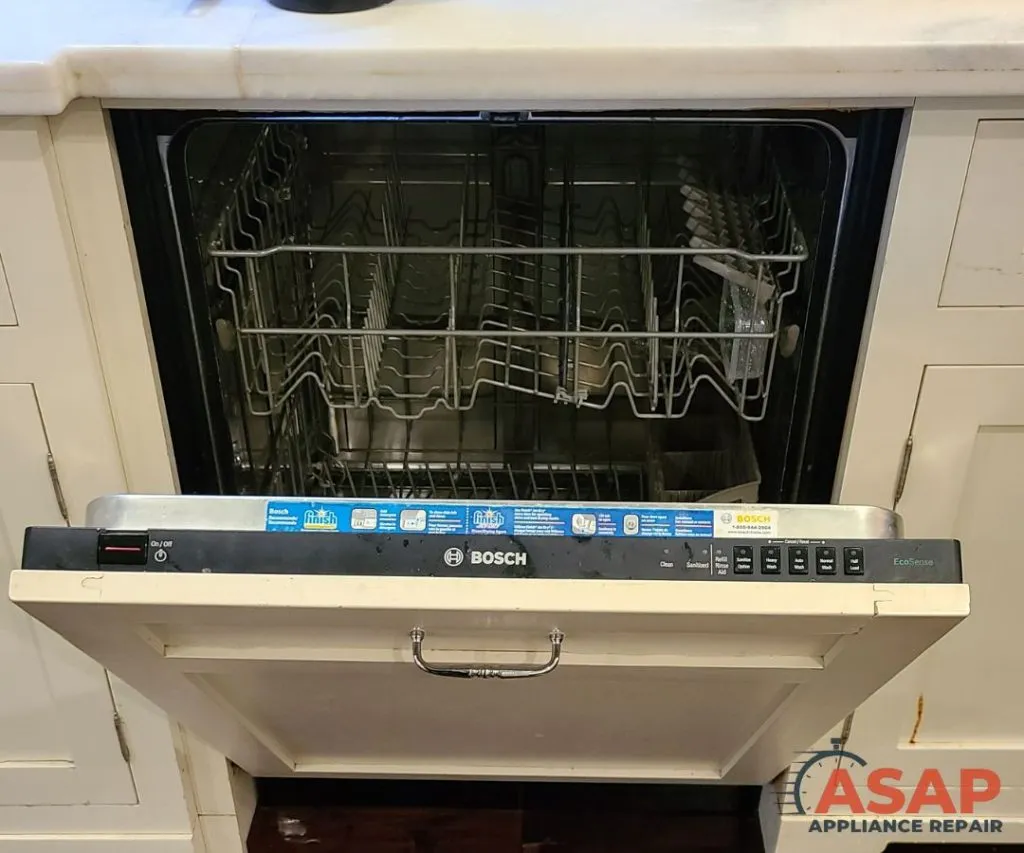
The first step to fixing your leaking dishwasher is to identify the source of the leak. Is it coming from one of the connections or hoses, or from the door seal? If it’s a hose, check if it’s been properly connected and secure. If it’s coming from the door seal, you can try tightening or replacing any loose screws that may be causing an imbalance in pressure.
If these solutions don’t work, you should contact a professional repair technician for help. Our repair experts can properly diagnose and repair your appliance right away!
There are many possible causes for a dishwasher not cleaning dishes properly. Some of the most common potential causes include:
1. The dishwasher is overloaded – if too many dishes are placed in the washer, it may be difficult for water and detergent to reach all of them effectively, resulting in residue or spots left behind on the dishes.
2. A clogged filter – food particles that accumulate over time can block water flow and prevent effective cleaning of your dishes. Regularly check your filter for built-up debris to keep it running smoothly.
3. Insufficient detergent – if you’re not using enough detergent or a type of detergent that’s too weak, it won’t be able to cut through grease and stuck-on food particles, leaving dishes dirty.
4. Incorrect temperature settings – hot water helps break down grease and other residue on dishes. If your dishwasher is set to a lower temperature, it won’t be able to effectively clean your dishes.
5. A worn out or damaged component – if any part of the dishwasher isn’t functioning properly due to wear and tear or damage, it may affect its ability to clean dishes correctly. Check for signs of defects such as leaking hoses or loud noises coming from the unit.
If none of these potential causes explain why your dishwasher isn’t cleaning the dishes, or you need help assessing the problem, give our professional repair company a call. We can help you identify the problem right away and get your dishwasher back to working order.
If your dishwasher is not draining, the issue could be caused by a clogged drain hose or an issue with the pump. There are a couple steps you can take to troubleshoot and fix the problem.
First, inspect the drain hose for any kinks or blockages. If you find anything blocking the flow of water, remove it. Check that the drain hose is properly connected to both the dishwasher and garbage disposal/sink. Make sure there are no loose connections that need tightening or replacing. Next, locate and inspect the pump assembly at the bottom of your dishwasher; make sure there isn’t any debris stuck inside preventing proper drainage. If necessary, use a damp cloth to clean around and inside the pump assembly.
If these steps do not solve the problem, you may have an issue with the internal components of your dishwasher such as a faulty float switch or drainage valve, which would require professional repair.
If you’re unable to identify and fix the issue on your own, contact a certified appliance specialist to troubleshoot and service your dishwasher. Our dishwasher technicians are available 7 days a week to help!
A persistent bad smell in your dishwasher usually means food debris and grease are trapped inside the filters, spray arms, or seals. These moist, warm areas are perfect for mold and bacteria growth. Running a regular dishwasher cleaning cycle with a recommended dishwasher cleaner helps remove build-up, but you also need to manually clean the filter and spray arms to prevent odors.
Additionally, leaving the door slightly open after use allows moisture to escape, reducing mold growth. If smells continue despite cleaning, a professional inspection can identify hidden issues like clogged drain lines or worn seals.
If your dishwasher suddenly runs for much longer than expected, it could be struggling to heat the water to the proper temperature. The heating element or thermostat may be malfunctioning, preventing water from reaching the right temperature for efficient cleaning. In some models, sensors that detect soil levels or water clarity might be faulty and cause the machine to extend cycles unnecessarily.
Low water pressure or clogged spray arms can also increase cycle time. If basic cleaning and water temperature checks don’t help, having a technician test and replace faulty heating or control parts is the best course.
When the control buttons or touchpad on your dishwasher don’t respond, moisture may have seeped into the control panel, or the control board may be failing. Sometimes, resetting the dishwasher by unplugging it for a few minutes clears temporary glitches.
However, if the problem persists, the control panel or board might need replacing. Because the control board manages all electronic commands, it’s best to have a professional handle the repair to ensure safety and proper installation.
White spots or a cloudy film on dishes often point to hard water minerals that build up during the wash cycle. Using too much detergent or using a detergent not formulated for hard water can make this worse. To fix this, use a rinse aid regularly it helps water sheet off dishes, preventing spots.
You might also consider installing a water softener or using dishwasher detergents designed for hard water. Cleaning the dishwasher interior regularly and making sure the spray arms are clear can also improve rinsing and reduce spots.
If your refrigerator isn’t cooling properly, there are a few steps you can take to diagnose and fix the issue.
First, make sure that the temperature control on the front of the fridge is set to an appropriate level. If it’s already been set correctly, check if any of the vents or coils in the back are blocked by dirt or dust; if so, clear them away with a duster. You may also want to check all door seals and hinges to make sure they are intact, as faulty seals can affect cooling efficiency. Finally, try unplugging your fridge for about five minutes then plugging it back in – a process known as “hard resetting” –which can sometimes reset the cooling system.
If none of these solutions help, our expert fridge technicians can certainly help! They have the expertise to repair all common brands and issues of fridges!
If your fridge is making loud noises, the issue could be caused by a range of problems. The source of the noise can help determine what action to take.
If you hear a humming or buzzing sound, check the compressor for any loose parts that could be causing the vibration. Also, make sure the coil fins are cleaned and free from dust buildup as this can also cause unnecessary noise. If you hear rattling or clicking noises, it could mean there’s something stuck in the condenser fan blades or motor that needs to be removed. You should also check if any items stored on top of your refrigerator are vibrating and creating these sounds. If you hear a gurgling noise, it could be due to ice collecting in the drain pan and should be removed.
If the noise persists, you should all a professional fridge repair technician to take a look at your fridge and determine what’s causing the noise. Taking these steps can help ensure your refrigerator runs as smoothly and quietly as possible!
The first step in understanding why your fridge is leaking is to identify the source of the leak. It could be coming from a number of sources, including condensation on the door seal, a blocked defrost drain, a damaged water line, or a faulty water filter.
If you suspect that condensation is causing the leak, check if moisture has built up around the door gasket. If this is the cause of your problem, try wiping it dry and see if that helps fix the issue. If that doesn’t work, examine the area underneath your refrigerator to see if there are any puddles present. This could indicate that either your defrost drain or water line may be blocked. If you think this might be the problem, you’ll need to call a professional repair technician who can help you troubleshoot and properly fix the issue.
Finally, if none of these solutions seem to work, it’s possible that your water filter may be causing the leak. In this case, replacing the filter should solve the problem. No matter what is causing your fridge to leak, it’s important to address it as soon as possible to avoid any further damage. Our repair technicians are here to help when you need fridge repairs!
If your freezer is freezing everything solid but the fridge compartment feels warm, it’s usually because the cold air isn’t circulating properly between compartments. This can happen if the damper control (which regulates airflow from freezer to fridge) is stuck or faulty.
Blocked vents inside the fridge due to items placed too close to them can also restrict airflow. When cold air can’t reach the fridge, food may spoil or not stay fresh. Make sure vents aren’t blocked and consider having a technician check the damper and sensors to restore proper temperature balance.
A door that doesn’t seal fully can cause your fridge to work overtime and increase energy bills. The most common cause is a dirty or damaged door gasket (the rubber seal around the door). Over time, gaskets can become cracked, warped, or loose.
Sometimes dirt or food residue prevents a tight seal. Clean the gasket regularly with warm soapy water, and if it’s damaged, replace it. A good seal is crucial to maintain proper temperature and reduce frost buildup.
If the fridge light doesn’t turn off when the door closes, it could be because the door switch is stuck or broken. This small switch detects whether the door is open or closed and controls the light accordingly.
If the light stays on, it not only wastes energy but can also raise the fridge’s internal temperature slightly, affecting food freshness. Testing and replacing the door switch is a simple fix that can be done by a repair professional.
Excessive frost inside the fridge indicates the defrost system isn’t working properly. This might be caused by a broken defrost heater, timer, or thermostat. Another possibility is a damaged door seal letting moist air in.
Frost buildup reduces fridge efficiency and storage space. If you notice ice forming, defrost the fridge manually and call a technician to inspect and repair the defrost components to prevent recurring ice buildup.

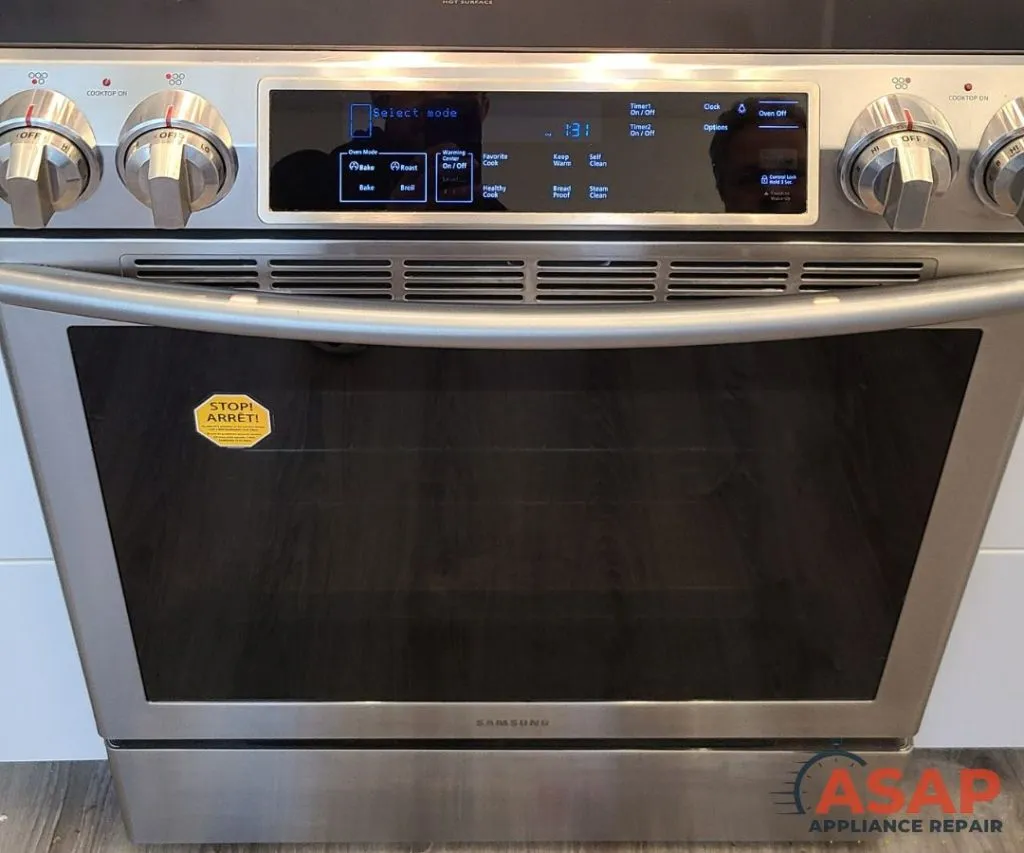
There are several potential reasons why your oven is running too hot and burning your food.
The first thing to check is the temperature setting on the oven dial. If it’s set any higher than necessary, that could be contributing to the issue. Additionally, you may want to ensure that all of the heating elements (including the burner tube) are working properly. A malfunctioning element can cause temperatures to run higher. It’s also possible that there is an issue with the thermostat inside the oven. It may be calibrated incorrectly or even damaged.
If these steps don’t seem to help, you should consider contacting a professional appliance repair service for further assistance. With our expertise and specialized tools, we will be able to identify and resolve whatever underlying issue is causing your oven to be too hot.
There are a few possible reasons why your oven door won’t open. First, make sure that the latch is not stuck or jammed. If it is, apply light force to open the door and be gentle with the handle as to not break it.
If the latch appears to be functioning correctly, your next step should be to check if there is anything blocking the door from opening, such as kitchen items or debris that may have fallen in front of it. Clear any debris away from the area around the oven before attempting to open it again.
Finally, consider if you recently set a timer for your oven and it has finished cooking— in some cases, an electronic lock will engage when this happens and prevent you from opening the oven door. If this is the case, simply wait for the timer to finish and try opening the oven again once it has reset itself.
If none of these solutions help you open your oven door, then it’s likely that there is a mechanical or electrical issue with your oven and you may want to consider having a professional take a look at it. Our oven repair technicians are available 7 days a week to get your oven back into working order!
If you are experiencing uneven cooking in your oven, it could be caused by a few different factors. One possibility is that the heating elements in the oven have become misaligned or worn out. This can cause hot and cold spots, resulting in food cooking unevenly. Alternatively, if your oven has an old thermostat or sensor, it may be inaccurate and not regulating temperature properly. Additionally, your racks may not be level, which can also affect cooking times and temperatures.
Fortunately, there are some simple steps you can take to potentially resolve this issue. First off, check to make sure your racks are evenly placed in the oven and that they’re level with each other. You can accomplish this by placing a bubble level on top of the rack before putting it into the oven. If you find that there’s a problem with the racks, you may need to adjust them or get new ones. Next, check to make sure your heating elements are properly aligned and working correctly. You can do this by visually inspecting them and testing their performance using an ohmmeter. If they appear worn out or not functioning at all, you should replace them as soon as possible.
Finally, if your thermostat or sensor is old or inaccurate, it may be time for a replacement. When it comes to oven repairs, you should call a professional repair technician to properly and safely get the job done.
The seal or gasket around the oven door keeps heat from escaping during cooking. If it’s cracked, torn, or loose, heat leaks out, causing uneven cooking and longer cook times. This also wastes energy.
You might notice hot spots or burnt edges on your food. Replacing the door gasket restores proper sealing, improves cooking results, and saves energy. It’s a relatively easy fix a pro can do quickly.
The broiler is the high-heat element at the top of the oven used for quick browning or searing. If it doesn’t heat up, it might be due to a faulty broil element or a defective thermostat controlling the broiler.
Without a working broiler, certain recipes like steaks or casseroles won’t brown correctly. Diagnosing the exact cause requires a technician who can test electrical parts and replace any faulty components safely.
If your oven temperature swings wildly or your food cooks unevenly, the thermostat or temperature sensor may be malfunctioning. These parts monitor the oven temperature and tell the heating element when to turn on and off.
A faulty sensor causes inaccurate temperature readings and inconsistent heat. This results in undercooked or burnt food. A technician can recalibrate or replace the sensor to restore even cooking.
Convection ovens rely on a fan to circulate hot air evenly around food. If the fan stops working, your oven won’t cook evenly, and you might notice cold spots or longer cooking times.
The fan motor or fan blade could be faulty or jammed. Having a professional inspect and repair the fan motor ensures your convection oven performs as it should.
Fortunately, this is a problem that you can often easily troubleshoot and fix yourself.
First, make sure that your burner is plugged into an outlet and the power is turned on. Next, check for any blockages in the burner or around it that might be preventing heat from reaching it. Also make sure there isn’t any dirt or debris clogging up the vent openings on the burner. If all of these things are clear, then inspect the connections between your stove top and its control panel to ensure everything is connected properly.
If none of these solutions fixes your issue, then it’s likely you have a damaged heating element which will require more serious attention from a professional technician. Our stove repair technicians are here to help when you need us most!
If your stove is clicking, it could mean one of two things. The first possibility is that the burners are set to a low temperature and the gas igniter is trying to light them up. In this case, simply turn the burner up higher and the clicking should stop.
The second possibility is that there may be an issue with a faulty gas valve or igniter module in your stove. If you suspect this might be the case, you should contact a qualified gas technician to come out and inspect/repair the stove for you. This will ensure your safety by ensuring that any potential faults are properly fixed before further damage occurs. It’s important not to attempt any repairs yourself as there may be danger involved if not done properly.
Remember that safety is always key when dealing with any kind of gas appliance -never try to troubleshoot something if you’re not sure what you’re doing!
If your stove won’t turn off, the first thing to check is that all of the cords are connected and secure. If a cord is loose or disconnected, this can cause the stove to remain on. Check for any visible signs of damage or wear on the wires, and if you find anything, contact an electrician immediately.
Another possibility is that you have a tripped breaker. This prevents power from flowing through circuits in your home, which could be causing your stove to stay on even when it’s switched off. To reset a breaker, locate your circuit box and switch the main switch all the way off then back on again.
It’s also possible that one of your burners or sockets is faulty. If the burner or socket is not properly connected, it may cause your stove to remain on even when it’s switched off. To check for this, inspect each of the burners and sockets individually. If a burner or socket isn’t working correctly, you’ll need to replace it.
Finally, there may be an internal fuse that has blown in your stove. This prevents power from getting to certain parts of the appliance and can cause it to stay on even when it’s switched off. You’ll need to contact a professional if you suspect an internal fuse blow as this type of repair requires specialized knowledge and tools.
If you’re unsure how to identify these issues, reach out to a professional for assistance. Our expert repair technicians can safely identify the problem with your stove and get it back to working order ASAP!
Loose or broken knobs make it hard to control burner heat, and can be unsafe if you can’t turn the stove off quickly. Over time, knobs can wear out or the plastic can crack. Replacing knobs is straightforward but important to maintain safe and precise control over your stove’s burners.
If you hear the clicking igniter but the burner doesn’t light, the igniter could be dirty or failing. Food spills and grease can clog the burner ports or cover the igniter, preventing the spark from igniting the gas.
Cleaning the burner carefully with a brush and ensuring it’s dry often fixes this. If the problem persists, the igniter or gas valve may need professional replacement.
An electric burner that heats inconsistently may have a faulty burner coil or a loose connection in the burner socket. This causes the coil to turn on and off repeatedly, which disrupts cooking. Testing by swapping coils can help isolate the problem. Faulty coils or sockets should be replaced by a technician.
If the burner’s “on” light stays lit even when the burner is off, it often means the infinite switch (the part that controls heat levels) is faulty. This can confuse users and waste energy. Since it’s an electrical part, replacing it requires professional care to ensure safety.
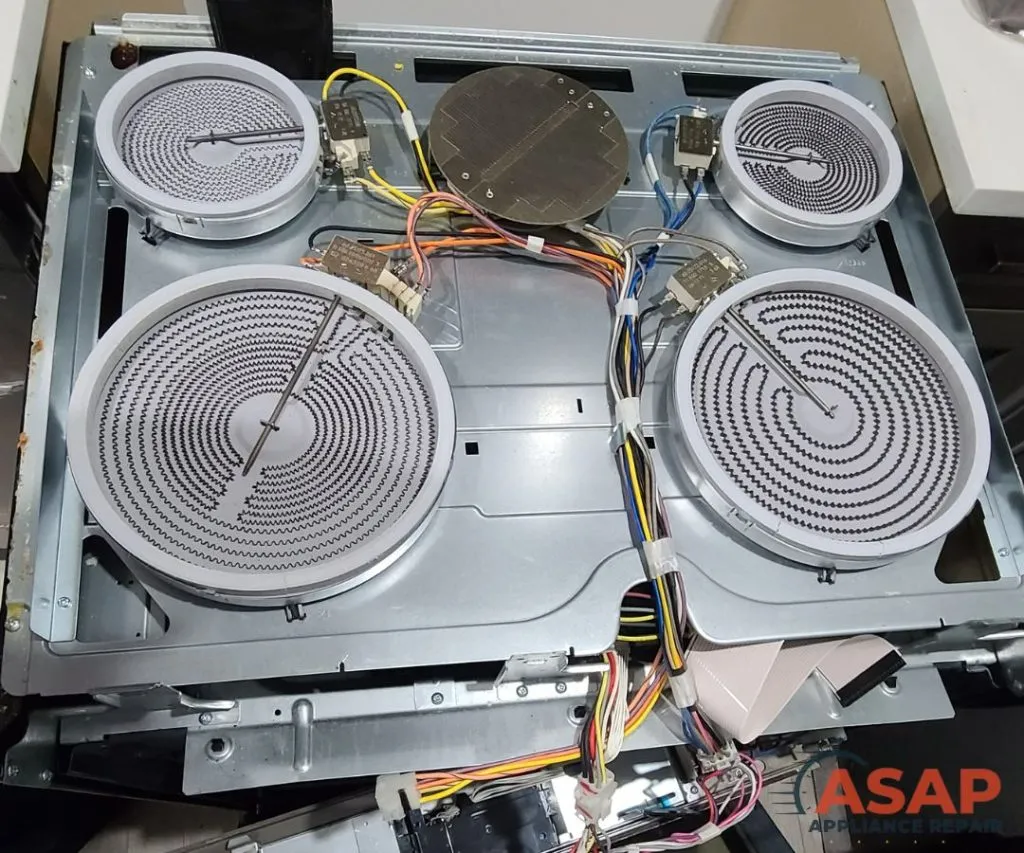
Our Recent Appliance Repairs in Vancouver
Check out some of our fridge repairs in Vancouver:
Some of our washer repairs in Vancouver:
Here are some of our previous dishwasher repairs in Vancouver:
Here are some of the dryers we fixed in Vancouver:
Here our some of our previous oven repairs in Vancouver:
Check out some of our previous stove repairs in Vancouver:


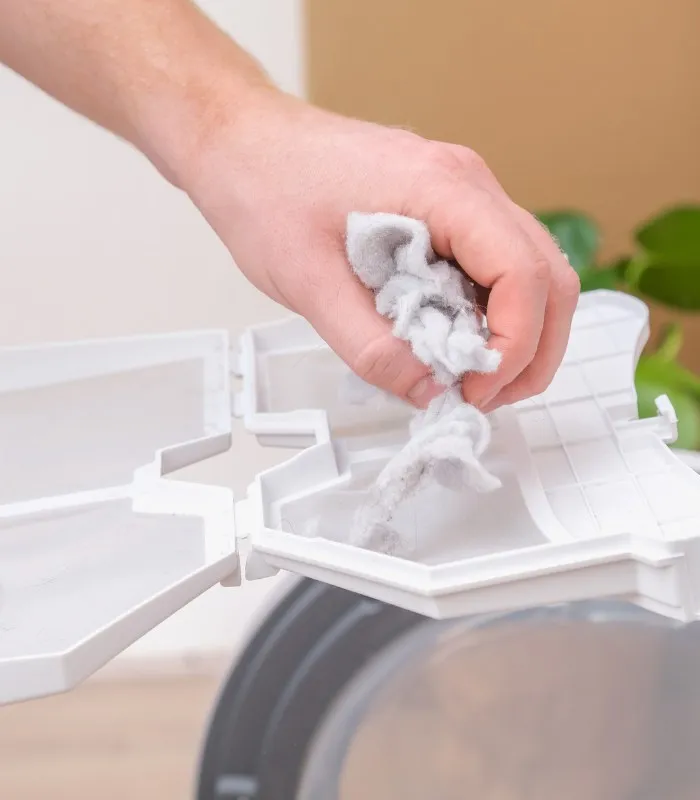
Appliance Maintenance Tips & Preventive Care
Keeping your appliances in top shape isn’t just about avoiding breakdowns- it saves money, time, and a lot of stress. Our team often sees issues that could have been prevented with simple, regular care. Here are some practical, easy-to-follow maintenance tips for every major household appliance:
1. Fridge Care
- Clean the coils every 6 months: Dust and debris can make your fridge work harder, increasing energy bills and wear on the compressor.
- Inspect door seals regularly: A worn or cracked gasket lets cold air escape, causing your fridge to overwork. A simple replacement can prevent big cooling problems.
- Keep it organized and ventilated: Avoid overpacking shelves so air can circulate properly, keeping your food fresher and reducing strain on the fridge.
- Check water and ice lines: For fridges with ice makers or water dispensers, make sure hoses are free from kinks or leaks.
2. Washer Maintenance
- Check hoses and connections monthly: Hoses with cracks or bulges can burst unexpectedly. Swapping them every 3-5 years prevents costly repairing washer emergencies.
- Clean detergent drawers and drum: Soap and fabric softener buildup can cause mold, odors, and poor washing performance. Run an empty cycle with hot water and a cup of white vinegar once a month.
- Level your washer: An unbalanced washer vibrates excessively, causing internal wear and even loosening parts over time. Adjust the feet to keep it stable.
- Don’t overload the drum: Overloading not only affects cleaning efficiency but can also strain the motor and suspension system.
3. Dryer Tips
- Clean the lint filter every load: This simple step improves airflow, reduces drying time, and lowers fire risk.
- Inspect and clean vents regularly: Blocked vents cause overheating, increase energy usage, and shorten dryer life. Remove lint from the duct and vent pipe at least every 3-6 months.
- Leave the door open after use: Letting moisture escape helps prevent mold and odors inside the drum.
- Don’t overload: Just like washers, overloading a dryer strains the motor, drum bearings, and heating element.
4. Dishwasher Care
- Run a monthly cleaning cycle: Use white vinegar or a dishwasher cleaner to remove grease, limescale, and soap buildup.
- Check spray arms: Food debris can block the holes in the spray arms, reducing cleaning efficiency. Remove and rinse them periodically.
- Inspect seals and filters: Clean the bottom filter regularly to prevent clogging and odors. Wipe door seals to maintain a proper watertight seal.
- Load dishes properly: Avoid overcrowding. Improper placement can block water flow and cause dishes to remain dirty.
5. Oven & Stove Tips
- Wipe spills immediately: Prevent baked-on messes that are harder to clean and can affect heating performance.
- Inspect ignitors: Ensure electric coils heat correctly. Small adjustments can prevent bigger stove issues.
- Check oven calibration: Use an oven thermometer to make sure your temperature matches the dial setting. Inaccurate temperatures can affect cooking results and strain internal components.
- Avoid abrasive cleaners: Use non-abrasive sponges and cleaners to protect surfaces, glass doors, and knobs.
And if an appliance does act up despite your best efforts, our Vancouver team is always ready to help with fast, professional appliance repair services near you!
Appliance Repair Company that Vancouver Trusts!
We pride ourselves on getting the job done right and on time.
Prompt and Reliable Service
We understand the importance of timely repairs. Our team is committed to providing prompt service in most cases.
Expertise and Experience
Certified technicians skilled in repairing washers, dryers, fridges, dishwashers, stoves, and more.
Competitive Pricing and Customer Satisfaction
We believe in fair and transparent pricing for our services. Our competitive pricing ensures that you receive high-quality repairs at a reasonable cost. We also prioritize customer satisfaction, and our team is dedicated to delivering excellent customer service.
A Closer Look at Our Appliance Repair Work
We handle professional repairs for all major household appliances - fridges, stoves, washers, dryers, dishwashers, and more. No matter the issue, our team at ASAP is ready to fix it quickly and correctly. If we can’t fix it, no one can.
We pride ourselves on fast, reliable service that keeps your appliances running smoothly. Below, you’ll find some of our recent repair projects - real jobs, real solutions. Click through to read the full stories and see how we helped homeowners get their appliances back in working order.

Trusted Appliance Repair Technicians in Metro Vancouver
- $2 million liability insurance on all repairs
- Only genuine manufacturer parts used
- 90-day warranty on labor and installed parts
- Experienced and respectful technicians
Frequently Asked Questions About Vancouver Appliance Repairs
At ASAP Appliance Repair, customer satisfaction is our top priority. That’s why, when you come to us for a household appliance repair, we strive to ensure that our work lasts. To give you even greater peace of mind, we back our appliance repairs with a 90 day warranty on labor and new parts that we install.
We understand that when you need appliance repairs, it can’t wait. That’s why our expert appliance technicians provide service 7 days a week across Vancouver and nearby areas. We are available to help you Monday-Saturday from 8AM-10PM and Sunday from 9AM-8PM.
We understand that life can throw curve balls and situations change quickly. If you’re not able to make your scheduled service appointment, please contact us as soon as possible so we can help accommodate any changes. Cancellations made within 1 hour of the scheduled appointment time will be charged a $40 cancellation fee. Thank you for your understanding.
The length of your appliance repair ultimately depends on the type of appliance, its age, as well as other factors such as the availability of parts. An appliance repair typically takes anywhere from 1 hour to 3 hours. However, sometimes parts need to be ordered in, which can affect the repair time.
We provide household appliance repairs all across Metro Vancouver, including:
Yes – all technicians are trained, insured, and experienced with major brands
Yes, we handle built-in and compact units and will advise if a part or replacement is required.
Yes! We specialize in servicing high-rise condos throughout Vancouver. Our technicians are experienced with the unique challenges of condo repairs, including tight spaces and building regulations. We coordinate with building management when needed and arrive fully equipped to fix your appliances efficiently, without unnecessary delays or extra charges. Whether it’s a broken washer, fridge, or oven, we ensure a smooth repair process that fits your condo’s rules and your schedule.
Absolutely. Our team has extensive experience repairing a wide range of appliances, from standard home units to commercial-grade machines. This means whether you’re dealing with a residential kitchen, a small business, or a larger commercial setup, we know the ins and outs of each appliance type. We handle everything from refrigerators, washers, and dryers to commercial ovens, ice makers, and dishwashers, ensuring your equipment runs safely and reliably.
We offer prompt and emergency appliance repair services. Our technicians will reach your house the prompt in most cases or latest by next day! Our team carries common replacement parts to tackle most issues on the first visit, saving you time and hassle.
Definitely. Transparency is important to us. Before we start any repair, we provide a clear, upfront estimate for both parts and labor. There are no hidden fees or surprises, so you know exactly what you’re paying for. If a more complex problem is discovered during the repair, we explain the options and get your approval before proceeding. Our goal is to make your appliance repair stress-free and budget-friendly.
Serving More Than Just Vancouver
Live nearby? We also provide appliance repair in surrounding areas across the Lower Mainland, ensuring homeowners and businesses can rely on fast, professional service wherever they are. Our technicians are locally based, fully licensed, and equipped to handle appliance repair Burnaby, appliance repair Surrey, appliance repair Richmond, among others.
